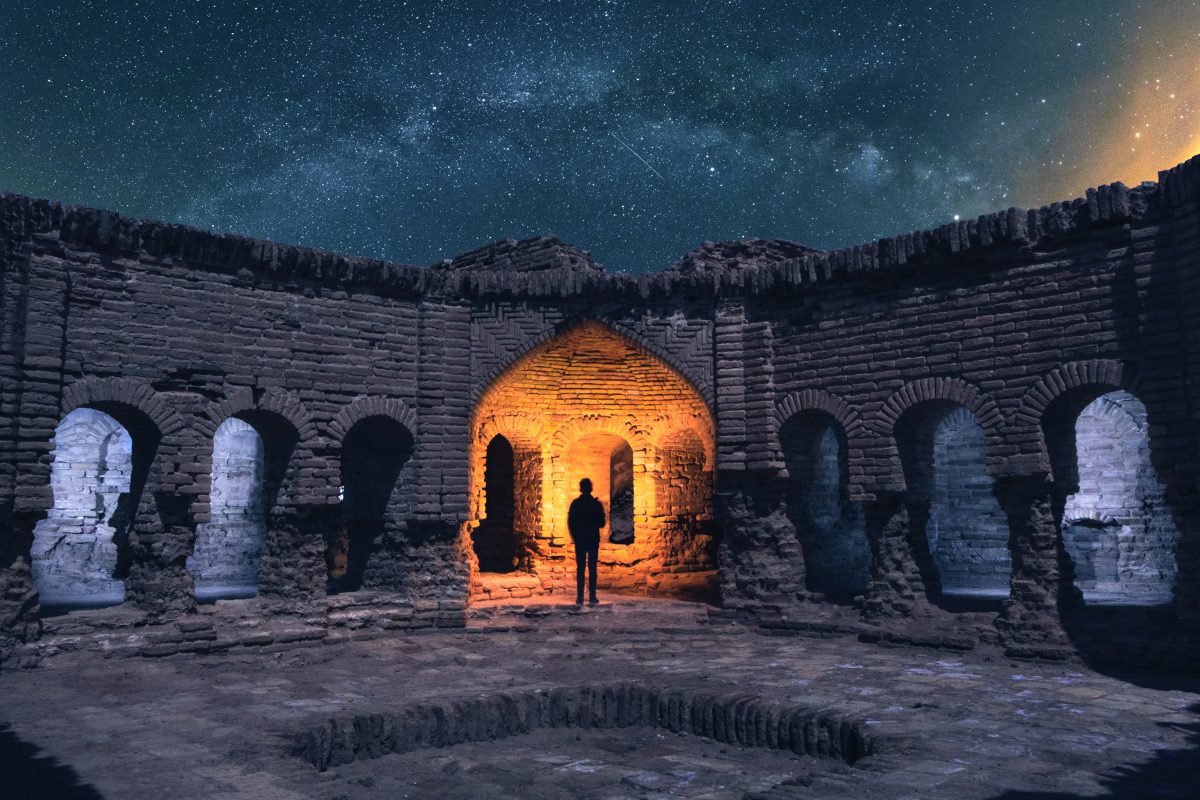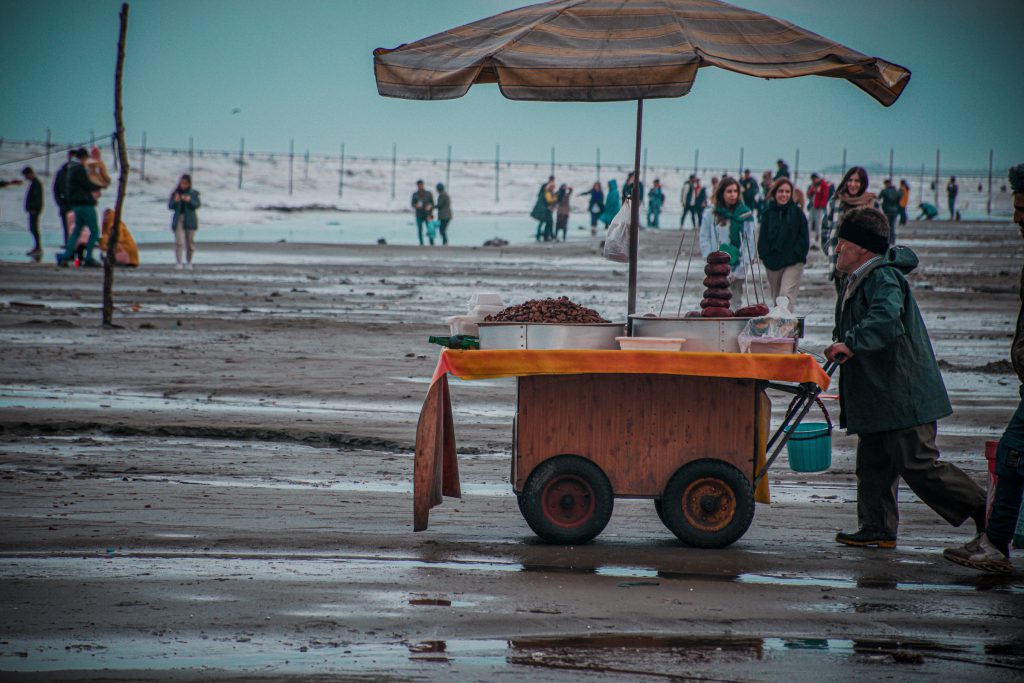Table of Contents
Welcome, fellow explorers and adventure seekers! If you’ve ever dreamt of embarking on a journey to a land where ancient history, stunning landscapes, and warm hospitality converge, you’re in for a treat. In this Iran Travel Guide, we’re about to unravel the secrets of Iran, a country that has captivated the hearts of travelers for centuries.
Whether you’re considering Iran Travel as your next trip or you’ve already booked your ticket, our aim is to equip you with the knowledge you need to make your trip an unforgettable experience, from understanding the intricacies of obtaining an Iran visa to managing your finances while in the country, we’ve got you covered. We’ll also delve into the nuances of Iranian etiquette and dressing codes, ensuring that you navigate this beautiful nation with grace and respect.
So, get ready to embark on an enriching journey through the enchanting realms of Iran. Pack your curiosity, an open heart, and a sense of adventure because Iran is waiting to reveal its treasures to you. Let’s begin this odyssey together!
Iran Travel Guide: Why Visiting Iran?
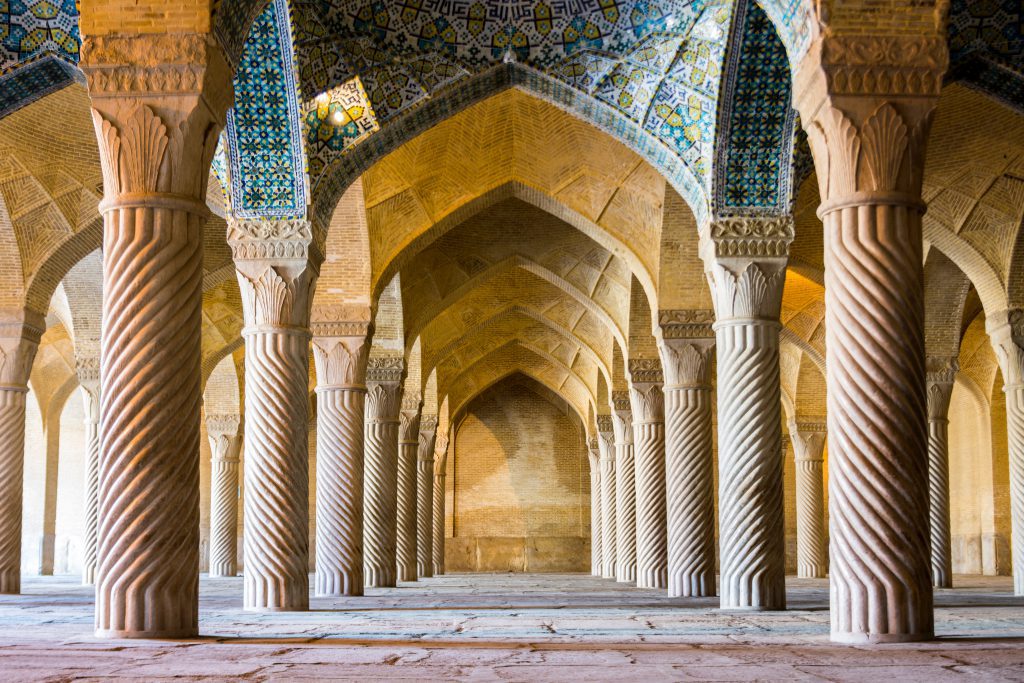
Visiting Iran is an absolute must for any adventurous traveler! With its rich history, breathtaking landscapes, and warm-hearted locals, Iran offers a truly unique and unforgettable experience. Imagine wandering through ancient cities like Isfahan, where stunning mosques and palaces adorned with intricate tile work transport you to a bygone era.
Don’t miss the mesmerizing beauty of the deserts, where the sand dunes seem to stretch on forever under a sky painted with stars. And, of course, the delicious cuisine will tantalize your taste buds with aromatic kebabs, fragrant saffron rice, and sweet baklava. But what truly makes Iran special is the warmth and hospitality of its people, who are eager to share their culture and stories with visitors. Here we listed a few reasons why to visit Iran:
1. Embrace the Timeless History
Iran boasts an ancient civilization that dates back thousands of years, and its historical significance is awe-inspiring. From the magnificent ruins of Persepolis, a UNESCO World Heritage site, to the grand Golestan Palace in Tehran, each structure is a testament to the country’s glorious past. Wander through winding alleys of historic cities like Isfahan and Yazd, where intricate architecture and the echoes of the past transport you to a bygone era.
2. Immerse in Vibrant Culture
Iran’s culture is a tapestry of diverse influences, from Persian, Arab, and Turkish to Central Asian and European. Experience the warmth of its people as they welcome you with open arms and indulge you with their hospitality. Marvel at the vivid colors of traditional clothing and savor the flavors of Iranian cuisine, renowned for its aromatic spices and delicately prepared dishes.
3. Mesmerizing Landscapes

Venture beyond the cities, and Iran unfolds its breathtaking natural beauty. From the lush greenery of the northern forests (Hyrcanian Forests) to the stunning deserts of Dasht-e Kavir and Dasht-e Lut, each landscape is a masterpiece of nature’s artistry. Don’t miss the serene beauty of Mount Damavand or the otherworldly Kaluts, where wind-sculpted sand dunes create a surreal landscape.
4. UNESCO World Heritage Sites
Iran is home to an impressive array of UNESCO World Heritage Sites, and exploring them is like traveling back in time. Discover the ancient city of Bam and its adobe citadel, the awe-inspiring ancient aqueducts of Shushtar, and the magnificent Armenian Monastic Ensembles of Iran. Each site offers a unique glimpse into the country’s diverse heritage and architectural brilliance.
5. Dazzling Art and Architecture
Iran is an art lover’s paradise. Delve into the mesmerizing world of Persian carpets, renowned for their intricate designs and craftsmanship. Admire the mesmerizing beauty of Islamic architecture in mosques like Nasir al-Mulk in Shiraz, where colorful stained glass windows cast a rainbow of hues on the floors.
6. Experience Festivals and Traditions
Plan your visit to coincide with one of Iran’s vibrant festivals, and you’ll be treated to an immersive cultural experience. Witness the exuberant celebrations of Nowruz, the Persian New Year, or be part of the spiritual fervor during Ashura. These festivals offer a window into the soul of Iran’s traditions and values.
7. Warmth and Hospitality of Locals
Iranians are known for their exceptional warmth and hospitality towards visitors. Prepare to be embraced with open hearts and enjoy a genuine connection with the locals. The enriching interactions you’ll have will undoubtedly leave a lasting impression on your travel memories.
8. Safe and Welcoming Environment
Contrary to misconceptions, Iran is a safe country to visit. The people are warm and friendly, always ready to assist travelers. While you should exercise usual caution as with any foreign destination, Iran’s reputation for safety is well-deserved.
9. Off-the-Beaten-Path Adventures
If you yearn for unique experiences, Iran has plenty to offer. Explore the enigmatic village of Masuleh, nestled in the Alborz Mountains, where houses are built into the mountainside. Trek through the lush valleys of Golestan National Park, spotting rare wildlife along the way. These off-the-beaten-path adventures will leave you with unforgettable memories.
10. Photography Paradise
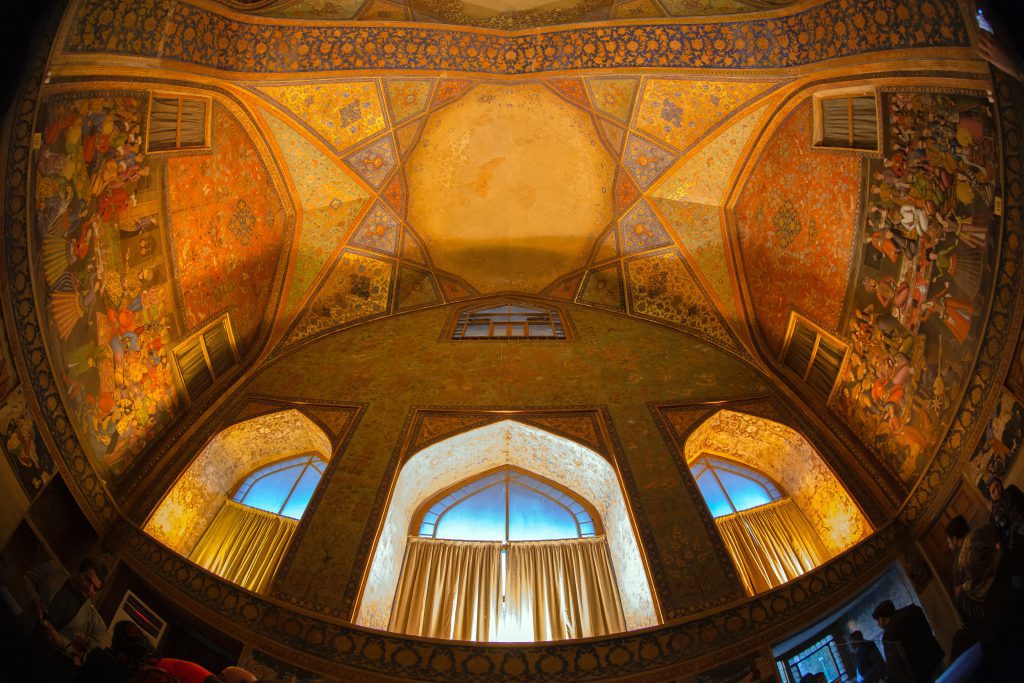
Photographers will find Iran to be a haven of visually stunning landscapes and architectural marvels. From the colorful bazaars to the ancient ruins, every corner of Iran is a potential masterpiece waiting to be captured through your lens.
Persia or Iran: Are They the Same?
Have you ever wondered if Persia and Iran are the same thing? They’re often used interchangeably, but there’s an incredible history to each.
Persia refers to the ancient Persian Empire, which existed around 550 BC to 330 BC. Persia was famous for its amazing art, culture, and architecture back then. It left a big mark on the Middle East and beyond. Today, we use “Persia” to talk about this old kingdom and its impact.
In 1935, the country officially switched its name from Persia to Iran, which means “land of the Aryans.” This change was meant to highlight Iran’s deep ties to the Aryan people who came to the region thousands of years ago. Nowadays, we use “Iran” to talk about the modern-day Islamic Republic of Iran in the Middle East.
Even though people often use Persia and Iran interchangeably, it’s cool to know the history behind each name. By learning about the fascinating history of Persia, you can better appreciate the rich culture and heritage of this beautiful country.
When we dive into Persia’s awesome history and how it influenced the world, we can start to really admire Iran’s amazing culture and heritage. So, let’s explore and learn!
Can Everyone Travel to Iran?
Iran has become a popular travel destination that attracts wanderers from all over the world thanks to its rich history, captivating culture, and breathtaking landscapes. However, some prospective travelers may have lingering questions about whether everyone can travel to Iran. Let’s answer that question!
The answer to whether everyone can travel to Iran is a resounding yes! Iran, in recent years, has taken significant steps to facilitate travel for visitors from diverse backgrounds and nationalities. The Iranian government, recognizing the potential of tourism and the desire of travelers to explore its wonders, has streamlined visa procedures, making it easier for tourists to obtain necessary travel permits.
While some nationalities can enjoy visa-free entry for short stays, most visitors can apply for a visa through a simple process. The option of a visa on arrival at major airports has also been extended to many nationalities, further enhancing accessibility. These measures reflect Iran’s commitment to being a welcoming and inclusive travel destination. We will talk about getting Iran visa in detail later in this article.
Safety and security are crucial considerations for travelers, and Iran stands as a country with a relatively low crime rate. Misconceptions surrounding its geopolitical situation often overshadow the reality on the ground. The Iranian people are known for their warm hospitality and friendliness towards visitors, making travelers feel welcomed and safe throughout their journey.
Cultural sensitivity plays a significant role in ensuring a smooth travel experience in Iran. The country has a rich cultural heritage, and respecting local customs is essential. While the dress code is more conservative compared to Western norms, adhering to it when visiting public places and religious sites is not only a sign of respect but also fosters positive interactions with the locals. If you’re interested in reading about someone’s experience traveling to Iran with To Iran Tour, we have a fantastic travelogue from one of our guests below. It’s definitely worth checking out!
Iran is making strides in improving accessibility for people with disabilities. Although there may still be challenges to overcome, many public places, hotels, and tourist attractions have taken steps to accommodate travelers with mobility challenges. Efforts are continuously being made to make Iran a more inclusive destination for travelers of all abilities.
When traveling to Iran, some people may worry about language barriers since English may not be commonly spoken. However, this should not discourage anyone from discovering this fascinating country. The Iranian locals are renowned for their kind-heartedness and eagerness to help tourists communicate, often using hand gestures and basic English phrases. Additionally, many young Iranians speak English as a second language, and it is taught in high schools.
Financial transactions and currency exchange are essential aspects of travel planning. Iran’s official currency is the Iranian Rial (IRR). While international credit cards may not be widely accepted, travelers can use US dollars or euros and exchange them at official exchange offices or banks. Carrying sufficient cash is advisable, especially when visiting more remote areas where ATMs may not be readily available.
Iran has its unique cultural norms, particularly regarding gender segregation and LGBTQ+ rights. Travelers need to approach these considerations with cultural sensitivity and respect. Understanding and adhering to local customs can create a harmonious travel experience and foster positive interactions with the local community.
Healthcare is a crucial aspect of any travel experience. Iran boasts a well-developed healthcare system with competent medical professionals. While the likelihood of medical emergencies is low, having comprehensive travel insurance is recommended to ensure peace of mind throughout the journey.
To sum up, Iran has made significant strides in improving its travel accessibility in recent years, making it a warm and inclusive destination for visitors from all over the globe. With simplified visa processes, increased safety measures, and a commitment to meeting diverse needs, Iran warmly welcomes travelers. Adapting to local customs, respecting cultural sensitivities, and being open to new experiences will undoubtedly enhance the travel experience in this captivating country where history, culture, and natural beauty unite seamlessly.
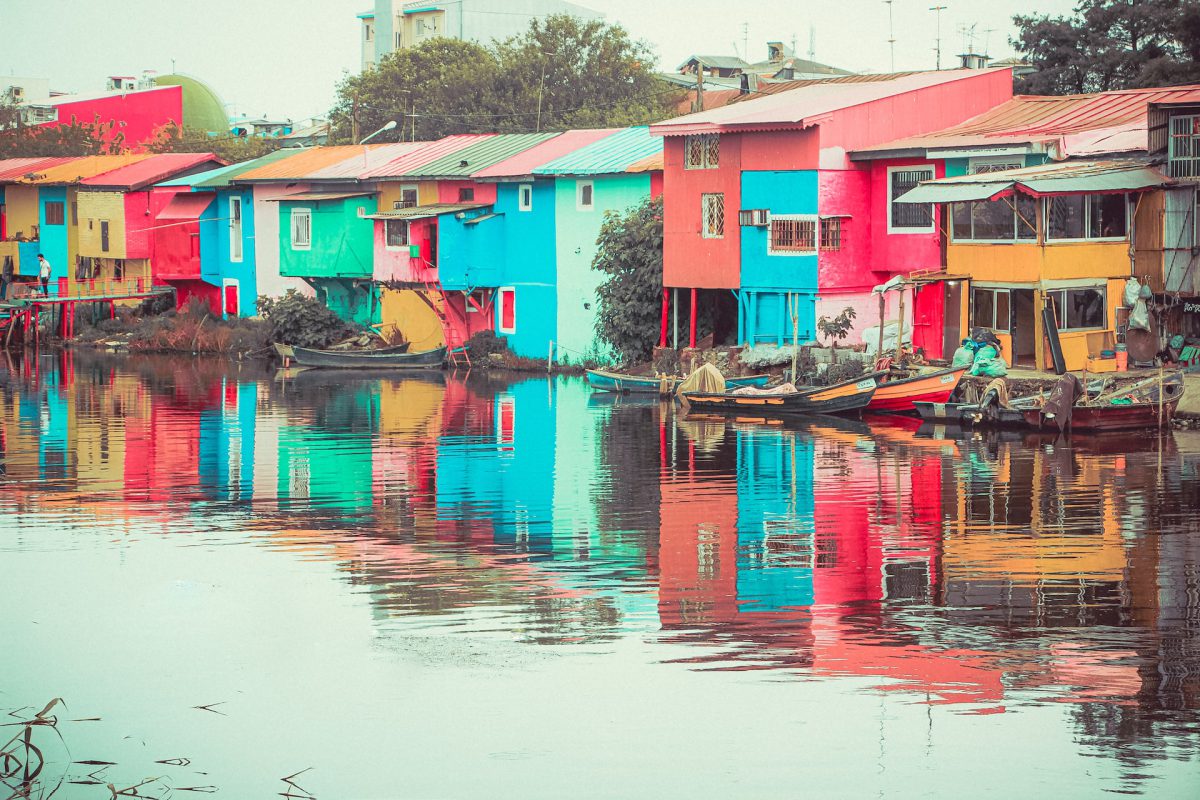
Hey!
Thank you for joining me on this journey through the historical tapestry of Persia and Iran. Now, we want to extend a personal invitation to each one of you. If you’ve been captivated by the allure of Iran and are considering a visit, or even if you’re just curious to learn more, I invite you to explore our Iran travel guide. It’s a labor of love, crafted to share the magic of Iran with fellow travelers. From general steps to plan your travel to Iran to everything you need to know about Iran visa that might confuse you, our guide promises to be your trusted companion on your Iranian adventure.
How to Plan Visting Iran? (12 Steps)
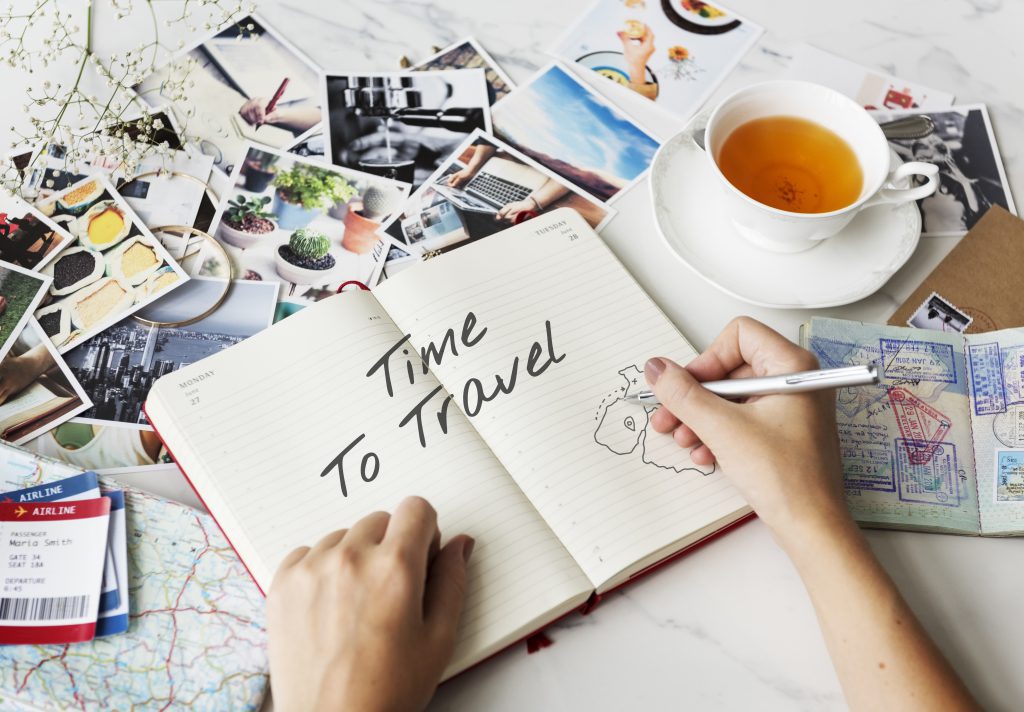
Traveling to Iran, with its rich cultural heritage and stunning landscapes, requires meticulous planning to ensure a smooth and fulfilling journey. Follow this step-by-step guide to efficiently plan your trip to this captivating destination.
Step 1: Research and Itinerary
Start by researching Iran’s diverse attractions and destinations. Identify the places you wish to visit and create a detailed itinerary. Consider the duration of your trip, the activities you want to engage in, and the must-see landmarks you don’t want to miss. You can check ToIranTour packages and customize your desired tour itinerary.
Step 2: Visa and Travel Documentation
Check the visa requirements for your nationality. Most visitors can obtain a tourist visa for Iran through the Iranian embassy or consulate in their home country. Alternatively, you can opt for a visa on arrival at major airports or use of visa services of an authorized tour operator/travel agency. Ensure your passport is valid for at least six months beyond your planned departure date. There is more information about getting Iran visa in the rest of the article and also on our blog.
Step 3: Best Time to Visit
Consider the best time to visit Iran based on your preferences. Spring (March to May) and autumn (September to November) offer mild temperatures and pleasant weather, ideal for exploring the country. Also, the best time to visit depends on the tour and activities. However, each season has its unique charm, so choose according to your interests.
Step 4: Cultural Awareness
Familiarize yourself with Iranian customs and etiquette to show respect for local traditions. Note that women should wear modest clothing that covers the arms, legs, and hair when in public places. Understanding and embracing the culture will enhance your travel experience.
Step 5: Language and Communication
While English is not widely spoken, the Iranian people are known for their warm hospitality. Learn a few basic Persian phrases to facilitate communication and connect with the locals. This will enrich your interactions during your journey.
Step 6: Accommodation and Transportation
Book your accommodation in advance to secure the best options that suit your budget and preferences. Iran offers a range of accommodations, from luxurious hotels to budget-friendly guesthouses. Plan your transportation within the country, whether by domestic flights, trains, or buses, to efficiently navigate between destinations. You can check the accommodation and transportation with a local tour operator.
Step 7: Health and Travel Insurance
Prioritize your health and well-being by consulting a healthcare professional for any required vaccinations or health precautions before traveling to Iran. Additionally, consider purchasing comprehensive travel insurance to provide coverage in case of unexpected medical emergencies or trip disruptions.
Step 8: Currency and Money Matters
Familiarize yourself with Iran’s currency, the Iranian Rial (IRR), and its exchange rates. While credit cards are not widely accepted, carrying sufficient cash is advisable, especially when traveling to remote areas where ATMs may not be readily available. Also, read about travel costs in Iran to plan accordingly.
Step 9: Safety and Security
Iran is considered a safe destination for travelers, with a low crime rate and a welcoming local population. However, exercise standard safety precautions and stay informed about local conditions to ensure a worry-free journey.
Step 10: Respect for Religious Sites in Iran
Iran is home to numerous significant religious sites. Show respect when visiting mosques, shrines, and other places of worship by adhering to dress codes and rules for visitors.
Step 11: Iran Local Customs and Traditions
Respect local customs and traditions to foster positive interactions with the Iranian people. Greetings, gestures, and dining etiquette -which we are going to talk about later in this article – may differ from your home country, so be open-minded and willing to embrace cultural differences.
Step 12: Packing Essentials
Pack appropriate clothing for varying weather conditions and cultural considerations. Don’t forget essentials like sunscreen, comfortable walking shoes, and a reusable water bottle for staying hydrated.
DIY or Tour for Traveling to Iran? Our Iran Travel Guide Perspective

When you’re thinking about having an awesome trip to Iran, you’ve got to decide if you want to plan everything yourself or join a guided tour. Each option has its own good and not-so-good points, so it’s important to pick what suits you and your travel goals best. In this comparison, we’ll look at the perks of DIY travel to Iran or going on a tour for visiting Iran. We’ll highlight why it’s a great idea and show you why tour services are valuable.
DIY (Do-It-Yourself) Travel to Iran
Strengths:
- Freedom and Flexibility: DIY travel offers the freedom to create a personalized itinerary, exploring off-the-beaten-path destinations at your own pace. It caters to adventurous spirits who relish the thrill of independent exploration.
- Cost Control: Traveling independently allows budget-conscious travelers to choose accommodations, transportation, and dining options that align with their financial preferences.
- Authenticity in Interactions: With DIY travel, you have the opportunity to interact with locals on a more personal level, leading to genuine cultural experiences and connections.
Weaknesses:
- Logistical Challenges: Planning transportation, accommodations, and activities can be time-consuming and potentially overwhelming, especially in Iran with language barriers and unfamiliar customs.
- Navigating Language Barriers: English is not widely spoken in Iran and this will lead to communication challenges in certain situations.
- Cultural Awareness: Researching and adhering to local customs and etiquette may require extra effort to ensure respectful interactions.
Travel to Iran by Tour

Strengths:
- Reasonable Pricing: Contrary to common misconceptions, tours to Iran often offer excellent value for money, including a comprehensive package of services and experiences at a reasonable cost.
- Local Knowledge: Tour guides possess extensive knowledge of Iran’s history, culture, and landmarks, providing enriching insights and context to enhance your understanding of the destination.
- Close Connections with Locals: Tour operators often have well-established relationships with local communities, facilitating authentic encounters with Iranians and unlocking hidden gems inaccessible to DIY travelers.
- Awareness of Subtleties: Experienced tour guides are attuned to cultural nuances, ensuring that travelers navigate social interactions with grace and sensitivity.
- Authentic Experiences: Tours curate experiences that offer a balance between must-see landmarks and off-the-beaten-path wonders, providing a more authentic and immersive travel experience. Since Iran is a less-known destination, this issue becomes more important.
Weaknesses:
- Fixed Itineraries: Tours operate on pre-planned itineraries, which may not cater to individual preferences for spontaneity and exploration. To solve this problem, you can use individual and customized tours. ToIranTour can help you in this matter.
- Group Dynamic: Traveling with a group may limit personal freedom and require compromise on specific preferences. However, using the services of tour operators who are committed to organizing tours with small groups can solve this problem to a large extent.
While both DIY travel and guided tours have their perks, let’s talk about why you might want to consider taking an Iran tour. Tours in Iran are like having a friendly local show you all the best stuff. They know the coolest places, the tastiest food, and the most interesting stories.
When you join a tour, you don’t need to worry about all the nitty-gritty details of planning. The tour guides take care of everything, so you can relax and enjoy your trip. Plus, they know all the ins and outs of Iran’s beautiful landscapes, so you won’t miss a thing.
But the best part? You get to connect with the local folks, discover hidden gems, and dive deep into Iran’s rich history and culture. It’s an adventure you won’t forget! So, if you’re looking for a stress-free and amazing way to explore Iran, consider joining a tour.
How Can I Buy Iran Tours?
To make sure your trip is fantastic and easy, you need to think about a few important things when choosing your tour. We’re here to help you with that. Check out these key factors to find the perfect tour for your travel to Iran:
1. Attractiveness of the Itinerary
Examine the tour itinerary closely to determine its appeal and alignment with your interests. A well-crafted itinerary should encompass a balance of must-see attractions and off-the-beaten-path gems, offering a comprehensive exploration of Iran’s diverse landscape. Look for unique experiences, cultural encounters, and opportunities for authentic interactions with local communities.
2. Licensed Tour Operator
Verify whether the tour operator is licensed and accredited by relevant authorities. A licensed operator adheres to specific standards, ensuring compliance with safety regulations, customer protection, and quality of services. This validation offers peace of mind and enhances the reliability of the tour.
3. Right Price vs. Misleading Pricing
Price is a crucial consideration, but it should not be the sole determining factor. Be cautious of tours that offer significantly lower prices than competitors, as they may compromise on the quality of services and experiences. Compare the inclusions of each tour to assess its true value and avoid being misled by seemingly inexpensive options.
4. Customer Support
Good customer support is integral to a satisfying travel experience. Look for a tour operator who is responsive to inquiries, provides detailed information, and is attentive to your needs and preferences. A reliable tour operator should be readily available to address any concerns before, during, and after your journey.
5. Communication with the Tour Operator
Efficient and clear communication with the tour operator is vital for a seamless travel experience. Ensure your Iranian tour operator is accessible through various communication channels, such as email, phone, or chat. Prompt responses and transparent communication demonstrate the operator’s commitment to customer satisfaction.
6. Group Size and Dynamics
Consider the group size of the tour and how it aligns with your preferences. Smaller groups offer a more intimate experience, while larger groups may foster camaraderie with fellow travelers. Choose a group size that complements your travel style.
By picking a tour that matches your interests, you can have an incredible adventure exploring Iran’s history, culture, and beautiful natural sights. So, get ready to discover the magic of Iran and enjoy every moment of your unforgettable journey!
Local Tour Operator or International Tour Operator?
When you’re planning your trip to discover the amazing attractions of Iran, you have two choices: you can either go with a local tour company or an international one. Each of these options has its own good sides and not-so-good sides, and they’re better suited for different kinds of travelers. In this comparison, we’ll focus on why using a local tour company can be a great idea. We’ll talk about what they’re really good at and how they can make your travel experience even more special.
Local Tour Operator
Strengths:
- Reasonable Pricing: Local tour operators usually have great prices because they really know the local scene. They can talk with suppliers and get good deals, often saving you a lot of money – up to 80-100% less than international tour operators. One reason is that local operators have lower taxes. On the flip side, many international tour companies team up with locals to run their tours. When they add an extra layer like an intermediary, costs go up, and so does the price for you.
- Local Knowledge: Utilizing the expertise of a local tour operator grants travelers access to a wealth of insider knowledge. Local operators possess an in-depth understanding of Iran’s history, culture, and attractions, allowing for enriching insights and personalized recommendations.
- Close Connections with Locals: Local tour operators have well-established relationships with local communities, leading to meaningful cultural interactions and authentic experiences that might not be possible with international operators. Local tour operators are attuned to cultural nuances and customs, ensuring that travelers navigate social interactions with respect and grace, leading to more immersive and respectful experiences.
- Flexible Itineraries: Local operators can offer more flexibility in tailoring itineraries to individual preferences, allowing travelers to focus on specific interests and personalize their journey.
Weaknesses:
- Unknown brand and trust: Naturally, international tour operators have a more well-known brand, and it is easier to trust them. Of course, you can trust local tour operators who have an official license and also have good performance in their previous services. On the other hand, you can book your tour with just a small deposit.
International Tour Operator
Strengths:
- Global Expertise: International tour operators often have a wider network of destinations and resources, offering comprehensive tour packages that cover multiple countries or regions.
- Ease of Booking: International operators usually have user-friendly websites and customer service in various languages, making booking and communication more accessible for a diverse clientele.
Weaknesses:
- Higher Costs: International tour operators may have higher overheads and administrative expenses, which can be reflected in the pricing of their tours, making them comparatively more expensive.
- Limited Local Insights: While international operators offer broad coverage, their understanding of the local culture and customs in specific destinations may not be as deep as that of local operators.
Iran Visa
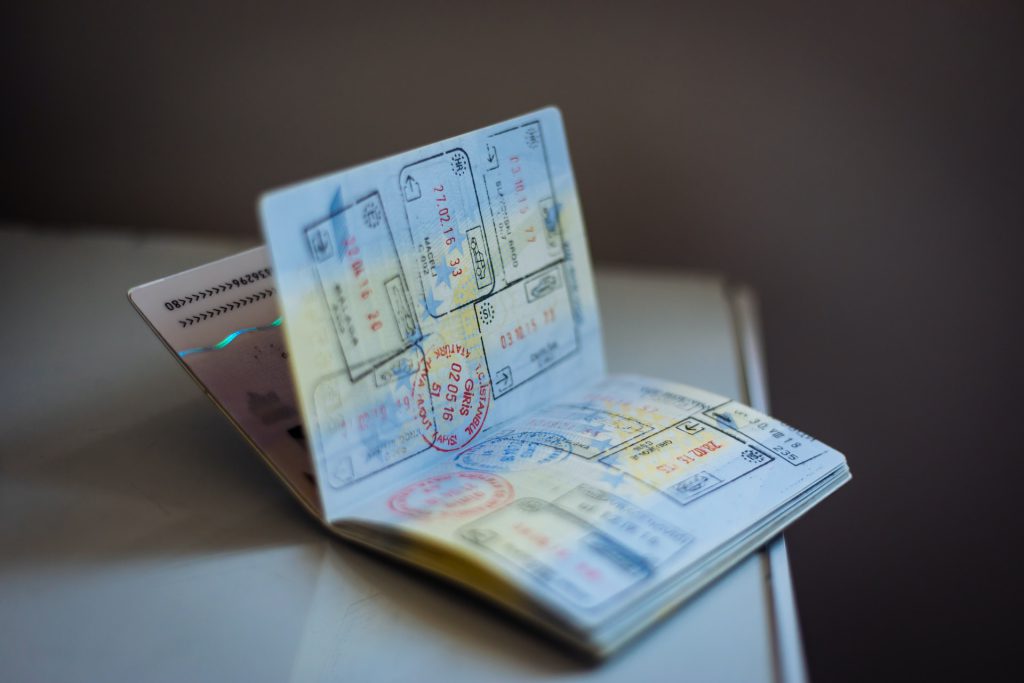
Are you having trouble with the Iran visa application process? You’re not alone. Getting a visa for Iran can be tricky for many travelers. It’s important to determine if you’re eligible and what rules you need to follow.
Generally, visiting Iran needs a visa, except for a few countries that can travel to Iran visa-free. There are some countries that can get their visa on arrival, but some countries are not eligible for Iran visa on arrival, and they must get their visa before their trip (which normally takes about 3 to 7 days to get your visa). There are some countries that don’t need any visa for visiting Iran. Keep reading to find out which group you belong to.
To get your visa, you can go to Iran’s embassy in your country, or apply for your Iran visa online, or even easier, use an authorized tour operator to do the process for you.
For some countries like the US, the UK, and Canada, things might be more complicated. Their governments don’t have good relationships with Iran’s government, which can make getting a visa even harder. Right now, there’s no Iranian embassy in the US.
Don’t let this process stop you from exploring the great things Iran has to offer. With some planning and looking into things, you can make the visa application go smoothly. Make sure you know what your nationality needs and give yourself enough time.
Even though getting a visa can be tough, Iran is an amazing place to visit. There are ancient cities with beautiful buildings, delicious food, and friendly people who will make you feel welcome. So, don’t let the visa process hold you back. Start planning your trip to Iran today, and To Iran Tour can help you make getting your visa easier.
How to Get an Iran Visa on Arrival?
Feeling a bit stressed about getting your visa to Iran? Well, here’s some good news! If you’re from one of 180 countries, you might not need to stress too much.
Starting from February 14, 2016, Iran’s Ministry announced something cool. They said that at their airports, they can give 30-day visas to people from those 180 countries. This makes things super simple if you want to visit Iran and see all its amazing stuff.
But hold on a second! Not everyone from those 180 countries can just show up and get a visa. It might depend on where you’re from, and there could be some rules you need to follow. Before you pack your bags for Iran, make sure to check what you need to do based on where you’re from.
If you’re allowed to get an Iran visa on arrival, you can do it at different airports, like Tehran Imam Khomeini Airport (IKA), Mashad Airport, Shiraz Airport, and more. Here’s what you’ll need to do:
- Answer some questions about your Iran trip,
- Show them where you’re staying (like a hotel reservation),
- Share a copy of your travel insurance,
- Prove you have a return flight ticket
By keeping yourself informed and being careful, you can have a great and safe trip to Iran!
Travel to Iran Without a Visa
There are 14 countries in 2023 that can visit Iran without any visa at all. These countries include Turkey, Azerbaijan, Georgia, Malaysia, Oman, Venezuela, China (for 21 days), Hong Kong, Macau, Egypt, Armenia, Lebanon, Bolivia, and Syria. To read more about Iran travel without a visa, read the article below:
Non-eligible Nationalities for Iran Visa on Arrival
It’s important to know who can get a visa when they arrive in Iran. If you’re from countries like Afghanistan, Bangladesh, Colombia, Iraq, Jordan, Somalia, the United States, Canada, and the United Kingdom, you can’t get a visa on arrival.
If that’s the case for you, don’t worry! You can still get a visa in a few different ways. You can go to the Iranian embassy in your home country, apply online, or ask an authorized tour operator to help you out, which is the easiest option.
What is the Iran Visa Authorization Code
This code is necessary for everyone who wants to apply for an Iran visa and serves as a determining factor for your visa application’s approval.
For those who plan to travel in a group, the tour operator will generally process the visa process and get the authorization code.
For solo travelers or those who don’t have a tour agent, ToIranTour can be a reliable option that offers essential travel services for visiting Iran. Alternatively, you can source an Iranian travel agency or seek direction from the embassy where you plan to obtain your visa.
When applying for the Authorisation Code, you’ll need to specify the embassy or airport where you’ll be processing your visa (unless you’re American, Canadian, or British because Iran doesn’t have embassies there). This can be a bit challenging for those traveling without solid plans or those who plan to visit multiple cities in Iran. It’s wise to choose an embassy in a city you’re likely to fly into Iran from, taking into account the processing time required for your visa application.
Remember, the Authorization Code isn’t your visa. It doesn’t guarantee you’ll get one. Once you have the code, you have to collect your visa label at the embassy/Iranian airport within three months. It’s a good idea to apply well ahead of your trip to handle any delays or issues. So, by getting the Authorization Code and applying for your visa early, you can have a smooth and fun trip to Iran.
Iran Tourist Visa Cost

When planning to obtain an Iran tourist visa, it’s important to budget for the costs of the visa. The cost of the visa service varies depending on the agency, usually with an administration fee of 30 to 50 euros, unless booked along with a tour package.
To Iran Tour offers the most affordable service for this situation, and they even have promotions where it can be free. Plus, if you book a tour with To Iran Tour, you won’t have to pay for the visa service.
However, the price of an Iran tourist visa depends on your nationality and the embassy where you apply for it. There isn’t a fixed fee for the visa, so it’s essential to inquire about the current fees at the embassy where you intend to obtain it. Consequently, the visa cost can vary depending on the location where you submit your application. For instance, one traveler paid €180 for their visa in Tbilisi, Georgia, while another paid a slightly higher amount to process their visa in Paris.
An IMPORTANT note is that to pay the cost of a visa at the airport, have enough cash in your pocket as in Iran, international payment cards are not valid. We have travelers who put their cash money in bags and do not have access to their money when check-in and have administrative problems, So keep enough cash in EUR/USD by yourself while getting your stomp visa at the airport.
It’s recommended to budget for the highest possible cost when planning your trip, as visa fees can change without notice. By budgeting accordingly and planning in advance, you can ensure a smooth and hassle-free visa application process and enjoy your trip to Iran with ease.
Iran Visa Timings
Obtaining an Iranian tourist visa is not a time-consuming process, but travelers should plan accordingly to avoid any last-minute stress. It’s important to be aware that the Authorisation Code, necessary for obtaining a visa label, could take 3 – 7 working days to process except for US, Canada, and Britain passport holders, which take more time (around 30-45 working days). Even if you fast-track the process, it’s likely that the code will arrive with only a few days to spare before your planned arrival in Iran or tour start date.
This means that before any trip to Iran, especially when traveling on a tour, you’ll need to plan in advance and be prepared to rush to the embassy to process your authorization code. You may have to pay extra for fast-tracking and organizing your flight ticket to Iran at the last minute, which doesn’t always guarantee the best price. So, it’s a good idea not to book your flights to Iran or any travel arrangements until you know your Iran visa will be processed.
By planning ahead and being aware of the potential delays and challenges in obtaining an Iran tourist visa, travelers can have a stress-free and enjoyable trip to this beautiful country.
How Can US citizens Travel to Iran?
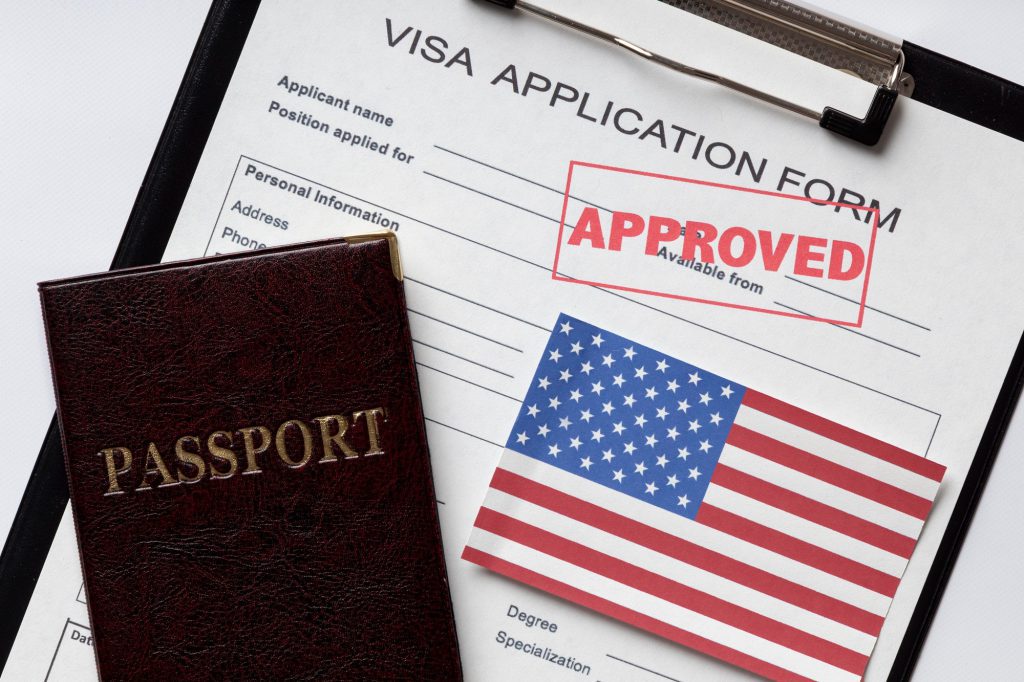
For American citizens, exploring the wonders of Iran can be an enticing prospect, but it comes with a unique set of considerations due to the complex relationship between Iran and the United States of America.
When it comes to visas, Iran has stricter conditions for American citizens, and the United States has similar policies for Iranian nationals. While the process of obtaining a visa for American citizens traveling to Iran may require more time and effort, it is entirely possible with the right approach. Here’s a brief explanation of the process.
1. Visa Application Process:
If you plan to travel to Iran, it’s best to start the visa application process well before your intended departure date. It’s recommended to begin the process at least two months in advance to ensure there is enough time for processing.
2. Contacting the Iranian Interests Section or Embassy
American citizens seeking to obtain an Iran visa must contact the Iranian Interests Section located at the Embassy of Pakistan in Washington, D.C. This is due to the absence of any direct embassy or consulate representation of Iran in the United States. Alternatively, they may choose to contact an Iranian consulate in a third country.
3. Application Documentation
Applicants will need to submit specific documentation to support their visa application, including a completed visa application form, a valid passport with at least six months’ validity beyond the planned departure date, passport-sized photographs, a detailed travel itinerary, and their resume which you can download its sample resume here.
4. Letter of Introduction
If you’re an American citizen planning to visit Iran, you’ll need something important: a special letter. This letter can be easily obtained through a trusted travel agency in Iran. They’ll help you get this letter from the Iranian Ministry of Foreign Affairs.
This letter is like your travel pass. It should explain why you want to visit Iran, your travel plans, and if someone in Iran is helping you, they should be mentioned too.
5. Group Tour vs. Independent Travel
American citizens can choose between traveling as part of an organized group tour or in a private tour.
IMPORTANT note: Both should be escorted by an authorized tour guide. Joining an organized group tour can simplify the visa process, as the tour operator may assist with obtaining the letter of introduction and navigating the application procedure.
6. Additional Screening and Processing Time
Due to the sensitive nature of the bilateral relationship, visa applications from American citizens undergo additional screening, which may contribute to longer processing times compared to citizens of other countries. However, it is crucial to remain patient and diligent throughout the process.
7. Visa Validity and Duration
After approval, the visa will specify its validity period and the permitted duration of stay in Iran. It is crucial to strictly adhere to these limitations to prevent any complications while traveling.
Therefore traveling to Iran as a US citizen may require navigating a more intricate visa application process due to the existing differences between Iran and the United States. However, with careful preparation, proper documentation, and patience, obtaining an Iranian visa is entirely possible. By adhering to the specified requirements and following the recommended steps, American travelers can embark on an unforgettable journey to discover the rich history, culture, and beauty of Iran, making memories to cherish for a lifetime.
How Can British and Canadian Citizens Travel to Iran?

British and Canadian citizens can travel to Iran following a similar process as American citizens. They must apply at the Iranian embassy in England or Canada, considering the required documentation and a letter of introduction from an authorized travel agency in Iran. Notably, these nationalities cannot obtain airport visas and must only use escorted tour services through a tour operator.
If the office of the custodian of Iran’s interests in Washington or other embassies located in Canada and England is far from your place of residence, or if you cannot visit them for any reason, you can receive your visa through the postal service. You should send the necessary documents, including your passport and your photo, along with a special form filled out by mail to the office of Iran’s Interests Protector or the embassy of your choice. After completing the administrative formalities, they will send the passport along with the visa to you.
Visa Refusal Possibilities
Travelers need to be aware that there is a risk of visa refusal for Iran if there is proof that they have traveled to Israel. This is due to the political tensions between the two countries and the Iranian government’s strict stance on the matter.
Additionally, visitors who work in certain industries, such as journalism or media, may also face scrutiny from Iranian authorities. This is because the Iranian government is sensitive to the portrayal of the country in the media and may view journalists and media workers as a potential threat to their national security.
If you have traveled to Israel in the past, it’s important to be transparent about this when applying for an Iran tourist visa. While this may increase the likelihood of visa refusal, it’s important to be honest to avoid any potential legal issues or complications during your visit.
It’s also recommended to avoid discussing any sensitive topics related to politics or religion during your stay in Iran, as these may be viewed as provocative and lead to unwanted attention from authorities.
Nationality Restrictions- Israelis Travel to Iran
It’s really important to know that if you’re from Israel, you can’t go to Iran. The two countries don’t get along right now, so this rule probably won’t change for a while.
We understand that it might be disappointing if you’re from Israel and you want to visit Iran to learn about its amazing culture and history. But it’s super important to follow the rules and not try to sneak into Iran. If you do, you could get into big trouble with the law, and your safety could be in danger.
Even if you have another passport from a different country, don’t try to go to Iran if you’re also an Israeli citizen. It’s just not safe.
Travel Insurance for Visiting Iran: Insights from Our Iran Travel Guide
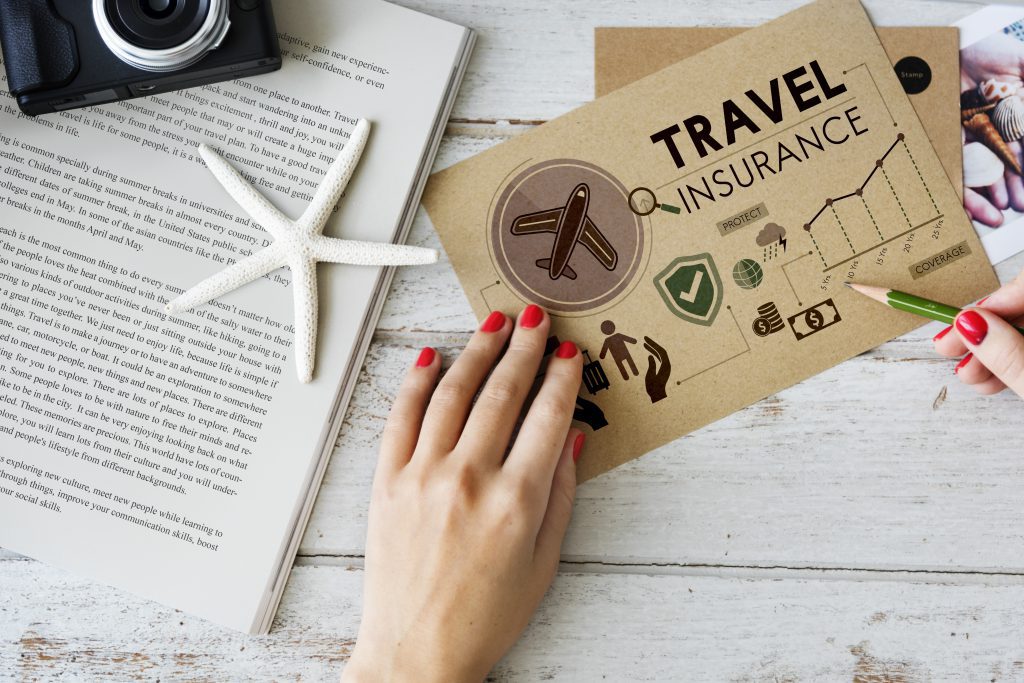
When you’re getting ready for a trip to Iran, remember this: You need travel insurance to get your visa. It’s like a permission slip for your trip.
But not just any insurance will do. Make sure your insurance covers all of Iran and all the stuff you want to do there. Some insurance might say no to certain places or activities, so read the fine print!
You can also ask your tour guide to set you up with health insurance from a company like Saman Insurance. This insurance will help if you get sick or have an accident, and it can cover up to 50,000 Euros in medical bills.
So, if you want to stay safe and have a blast in Iran, get good travel insurance and be careful. Happy travels!
Booking the Best Tour
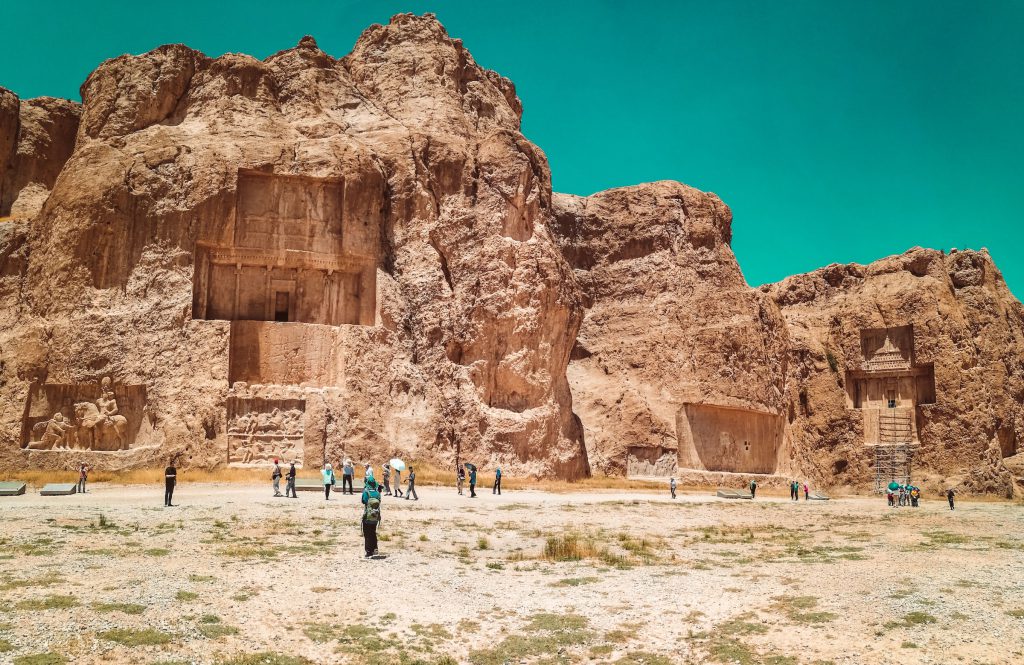
Booking an Iran tour package is a fantastic way to dive into the country’s incredible culture and history. It’s especially great if you want a smooth and stress-free trip. This might be your only option if you’re from the UK, the US, or Canada. You see, these countries have special rules that say you must join an official Iran tour operator or hire a private Iran guide.
Now, there are so many Iran tour packages out there that it can feel a bit overwhelming. But don’t worry! If you pick a trusted tour company like To Iran Tour, you’re in for a memorable adventure. We’ll take you to amazing places in Iran, ones that you might not easily reach on your own or using public transport. Plus, your local guide will be a treasure trove of info about Iran’s ancient history – perfect if you’re a history and culture fan.
You might think being in a tour group means you’re stuck all the time, but that’s not the case. You’ll still have plenty of free time to explore each place at your own pace. Even in a small group, we had loads of opportunities to discover Iran’s hidden gems on our terms.
Now, one thing to remember is that Iran tour packages can be quite packed. There’s not much downtime or rest days on the schedule, which might feel a bit rushed if you prefer a slower travel pace. But in just 12-14 days, you’ll see and experience so much that you’ll never forget.
All in all, booking an Iran tour package is an awesome way to soak up this incredible country and its rich culture and history. With a bit of planning and research, you’ll find the perfect tour that matches your interests and travel style. You’ll make memories that will stick with you forever.
Private Guided Tours of Iran
For those who prefer a more personalized travel experience, hiring a private tour guide in Iran is a great option. While it typically requires a minimum of two people, it offers the flexibility to customize your itinerary and travel at your own pace.
Private guided tours of Iran are particularly appealing to those who may have visa restrictions or prefer to avoid traveling in larger groups. With a private guide, you’ll have the benefit of local knowledge and expertise, and you can tailor your itinerary to suit your interests and preferences.
One of the advantages of a private guided tour is that you can have an intimate and authentic experience of Iran’s culture and history. Your guide can take you to off-the-beaten-path destinations and provide insights into local customs and traditions, giving you a deeper understanding and appreciation of the country.
Additionally, a private guided tour allows you to avoid the hassle and stress of planning logistics and transportation on your own. Your guide can handle all the details, from arranging accommodations and transportation to helping you navigate local customs and etiquette.
Iran Independent Travel
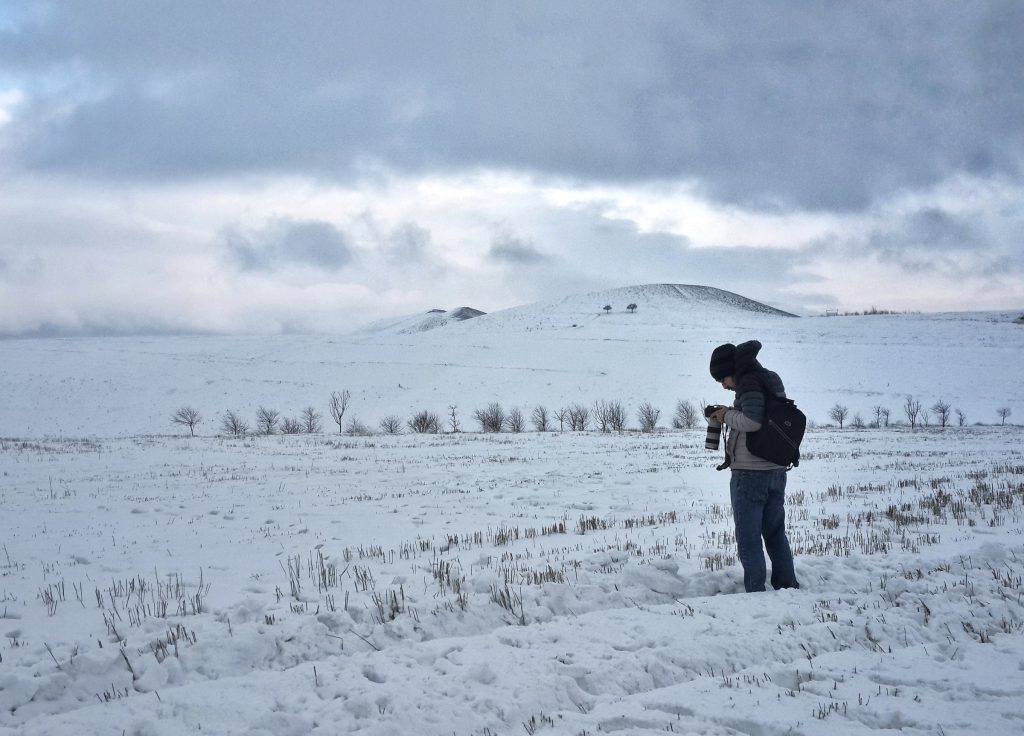
While solo and independent travel to Iran can be moderately easy for those with a free nationality, it’s important to note that the country is not yet well-trodden on the independent travel path. Hostels and guesthouses are scarce, and big, expensive hotels dominate the landscape, especially in Tehran. It’s also rare to come across a group of solo travelers to join.
However, that doesn’t mean that solo travel in Iran is impossible or unsafe. On the contrary, it’s a rewarding and exhilarating experience that offers a unique glimpse into the country’s rich culture and history. While it may require a bit more planning and effort, traveling independently in Iran allows you to create your own itinerary and explore at your own pace.
One of the advantages of independent travel is the flexibility to stay in smaller, locally-run accommodations and eat at local restaurants, giving you a more authentic and immersive experience. It also allows you to connect with locals and learn about their way of life, which can be a highlight of any trip.
Of course, traveling independently in Iran also requires some caution and common sense, such as being aware of local customs and dress codes and taking necessary precautions for safety. It’s also important to do your research and plan ahead to ensure a smooth and enjoyable trip.
Couchsurfing in Iran
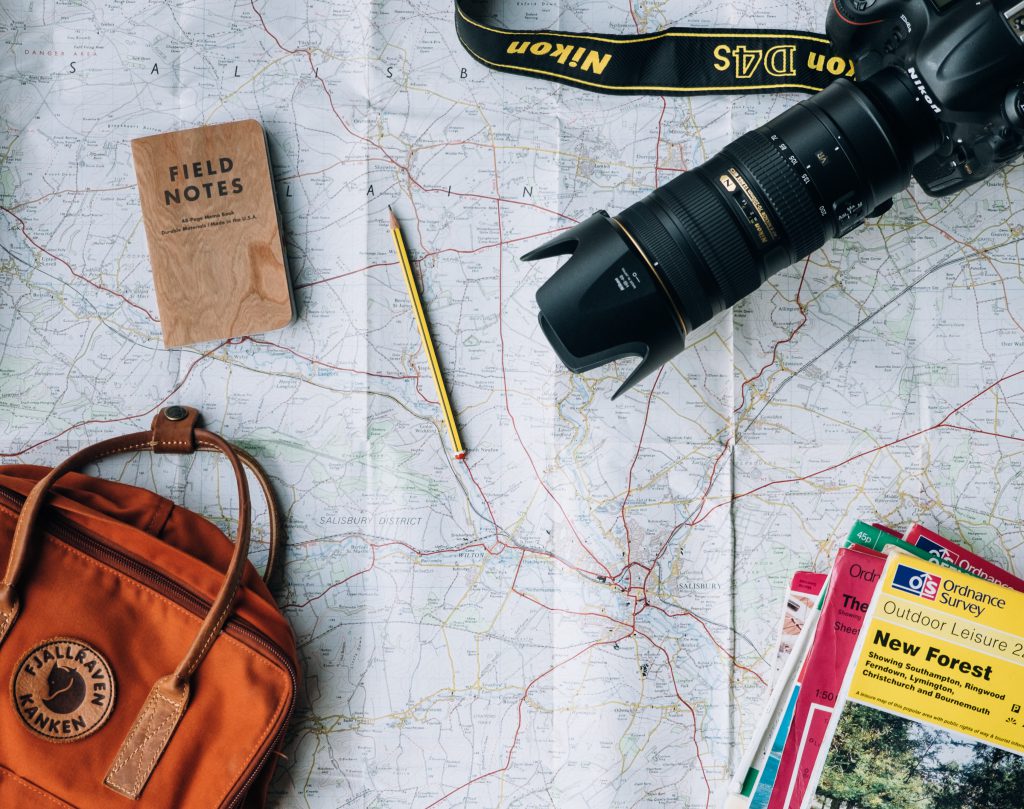
Couchsurfing can be a popular option for budget-conscious travelers looking to connect with locals and experience the culture firsthand. However, it’s important to note that Couchsurfing in Iran is officially illegal. While many independent travelers have reported using the resource and finding local hosts to be excellent guides, there are some risks involved.
One of the main concerns with Couchsurfing in Iran is the lack of official filters in place for hosts listed online. This means that travelers must exercise caution and take responsibility for their own safety. In the event that anything goes wrong, Couchsurfing hosts cannot be held responsible.
Despite these risks, Couchsurfing in Iran can be a rewarding experience for those who are willing to take the necessary precautions. It provides an opportunity to connect with locals and gain a deeper understanding of the country’s rich culture and history.
It’s important to note that while Couchsurfing may be illegal in Iran, it does happen anyway. However, travelers should be aware of the potential risks involved and take necessary precautions to ensure a safe and enjoyable experience. This may include carefully vetting potential hosts, staying in public areas, and communicating clearly with your host about your expectations and boundaries.
Solo Female Travel to Iran
Traveling alone as a woman in Iran can be a bit tough sometimes, but it can also be incredibly rewarding if you’re open to experiencing the unique culture and people here. While women might have some more rules to follow compared to men, many solo female travelers have found Iranians to be really friendly and kind.
Here are some things to keep in mind to make your trip smoother:
- Respect Local Customs: Especially in smaller and more traditional places like Yazd, Kashan, and Qom, it’s essential to dress modestly. That means avoiding clothes that are too revealing, as it might come across as disrespectful.
- No PDA: Public displays of affection, like hugging or kissing in public, aren’t allowed in Iran. However, friends of the same sex usually hug or kiss each other on the cheek and it’s considered normal.
Despite these things to watch out for, Iran is actually considered one of the safest countries for tourists. You can confidently explore its beautiful landscapes and rich culture, knowing that most locals will be warm and welcoming.
Just remember to be cautious like you would anywhere else. Stay away from poorly lit areas at night and keep an eye on your surroundings in crowded places. With some careful planning and an open attitude, traveling solo as a woman in Iran can be a really enriching experience that might change your life.
In the end, while it might require a bit more effort and attention to local customs, it’s a unique and rewarding way to discover this amazing country and make unforgettable memories.
Best Time to Travel to Iran
Iran is a year-round destination with diverse climates and landscapes, making it an ideal destination for travelers seeking a variety of experiences. However, the best time to visit Iran depends on the region you plan to visit and your personal preferences.
For the classic route, which includes popular destinations like Tehran, Kashan, Isfahan, Yazd, and Shiraz, the best time to visit is during the two high seasons. The first high season runs from early March to late May, while the second high season runs from early September to late November. During these periods, the weather is generally mild, and the landscapes are lush and green, making it ideal for sightseeing and outdoor activities.
If you’re planning to explore the Northwest and West route along the Zagros mountains, which includes destinations like Ardabil, Tabriz, Zanjan, Hamedan, Kermanshah, and Sanandaj, the best time to visit is during the high season from mid-April until mid-November. During this period, the weather is generally pleasant, and the landscapes are at their most picturesque.
If you’re thinking about visiting ski resorts in the northern part of Tehran like Dizin, Shemshak, and Tuchal, or if you’re headed to places in Southern Iran such as Ahwaz, Bushehr, Bandar Abbas, and the Persian Gulf Islands, the perfect time to go is from late November to late March. This is when the weather is cooler, and the ski resorts are at their busiest and most fun!
Keep in mind that July to September in Iran can get really hot, which might make the usual travel route not so comfy. But don’t worry! If you plan well and keep an eye on the weather, you can still have a great time visiting Iran during this time.
So, the ideal time to go to Iran depends on what you like and where you want to go. Iran has all sorts of landscapes and weather, so no matter when you decide to visit, you’ll always find something cool to do in this awesome country. For more detailed information about the best time to visit Iran based on your destination and weather, check out this article below:
Iran UNESCO World Heritage Sites
Iran is a treasure trove of UNESCO World Heritage Sites that will leave you awestruck. With 26 sites recognized by UNESCO, including 24 cultural and two natural wonders, Iran boasts an ancient lineage that Iranians take pride in.
Each of these sites is the result of years of research and presentation of evidence to prove their significance to the world. From ancient palaces to stunning natural landscapes, these sites offer a glimpse into Iran’s rich cultural and historical heritage.
Visiting all of these sites would require multiple trips to Iran, but the effort is well worth it. Some of the most popular UNESCO World Heritage Sites in Iran include the ancient ruins of Persepolis, the stunning Sheikh Safi al-din Khanegah and Shrine Ensemble in Ardabil, and the beautiful Masjed-e Jāmé in Isfahan.
Other notable sites include the historic city of Yazd, the ancient hydraulic system of Shushtar, and the Tabriz Historic Bazaar Complex, which is one of the largest covered bazaars in the world.
If you’re into history, nature, and culture or want a fantastic travel adventure, Iran’s UNESCO World Heritage Sites have something for you. So, get your bags packed, plan your trip, and let’s explore the awesome things this amazing country has to offer. You can even join the UNESCO tour with To Iran Tour to see it all!
Dress Code in Iran
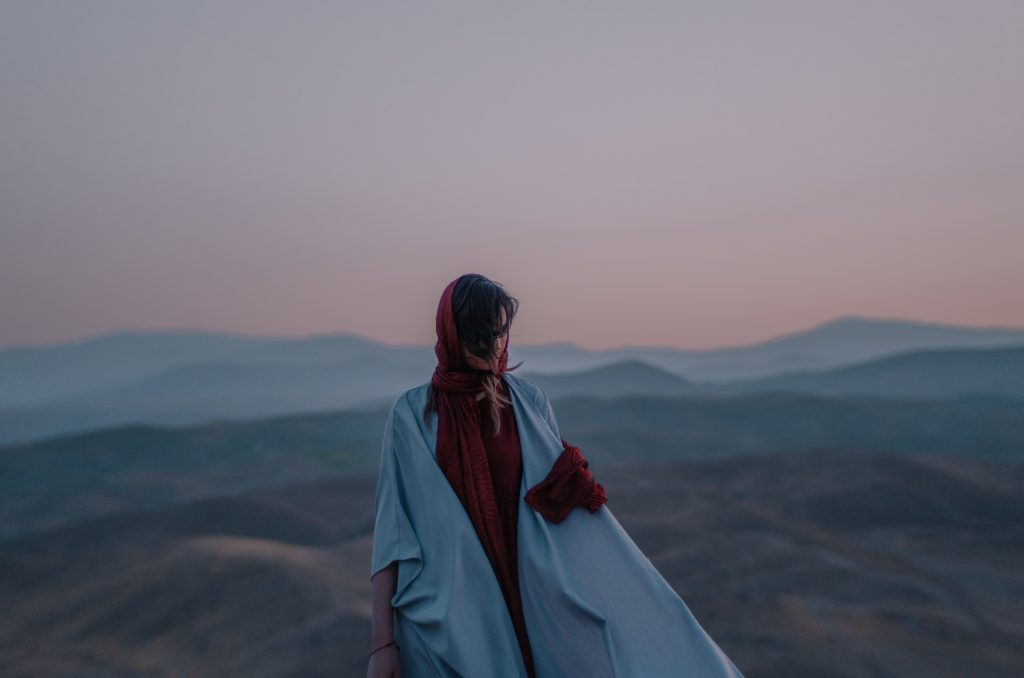
If you’re planning to visit Iran, it’s good to know that they have a dress code that you need to follow. As a woman, you should wear loose clothing that covers your body and a headscarf. But don’t worry, you don’t need to wear a burka or anything too concealing. You can still show off your personal style and wear clothes that make you feel confident and comfortable. Just keep in mind the local customs and you’ll be all set!
Even though there is a strict dress code in Iran, you’ll quickly see that it’s not as stereotypical as you might think. Iranian women are very fashionable and take pride in their appearance. Fashion is a way for them to express themselves and make a statement, and you’ll notice them wearing beautifully designed headscarves and stylish clothing that still comply with the Iranian dress code.
It’s also worth noting that the dress code applies to both men and women. Men are required to wear long-sleeved shirts and pants that cover their legs.
While it’s true that there is a “morality police” in Iran, whose job is to enforce the dress code and other moral codes of conduct in public, it’s important to note that they are not actively targeting foreign visitors. So, as a traveler to Iran, you don’t need to worry too much about being chased down by the morality police.
In general, if you show respect for local customs and adhere to the dress code regulations, you can have a secure and enjoyable travel experience in Iran. Therefore, don’t allow concerns about the morality police or any misunderstandings preventing you from exploring all the amazing things that this country has to offer.
Packing Tip for Travel to Iran
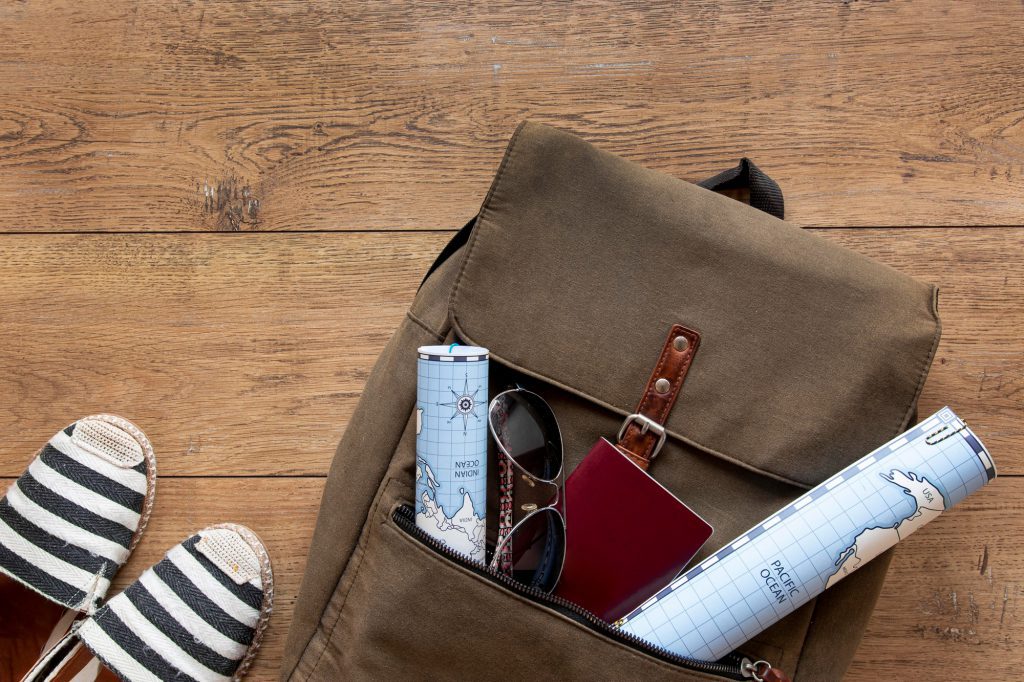
Packing for a trip to Iran can be a bit daunting, especially with the strict dress code regulations. However, with a little bit of preparation and the right mindset, you can embrace the local customs and still express your personal style.
The most immediate essential item to pack for Iran is a headscarf, also known as a ‘Roosari’ in Farsi. But don’t worry if it falls off – just put it back on again. While wearing a headscarf is mandatory, it’s common for Iranian women to wear it a little loose and halfway back on their head, with a high bun or ponytail to keep it in place. And if you’re worried about showing a little bit of hair, don’t be – it’s granted.
When it comes to tops, loose-fitting ones with three-quarter-length sleeves are ideal, especially in the heat. The general rule of thumb is that your body should be covered, and your arms should not be bare. As for trousers, they should be baggy, but tight, brightly colored leggings worn with a long, loose-fitting top are also acceptable, as long as your legs are covered down to the ankles.
The myth that you need to dress in dark colors or black tunics is just that – a myth. Embrace fashion the way the locals do, and bring some color into your Iran packing list! Open-toed sandals are OK, especially on hot days, and sports shoes are fashionable in Iran, especially in bright colors, so pack some for longer day trips.
If you’re worried about not having enough appropriate attire, fear not. As soon as you arrive in Tehran or Shiraz, hit the bazaars and local markets for plenty of options. And if you’re traveling with children, it’s worth noting that young boys can wear shorts and t-shirts, and girls under ten are not required to wear a headscarf.
For men, dressing in Iran is more straightforward, much like in Western countries, except for no short shorts, super short sleeves, or extremely tight-fitting clothing.
Overall, remember to approach the dress code with an open mind and respect for local customs. And don’t be afraid to express your personal style while still adhering to the guidelines. With the right attitude and a well-stocked suitcase, you can have a comfortable and enjoyable trip to Iran.
Is Iran Safe to Travel?
Even though some Western media might paint a different picture, Iran is a safe and friendly place for travelers. You might worry about safety because of politics and cultural differences, but the truth is that Iran is a great place to visit.
The people in Iran are super welcoming. You’ll meet lots of friendly locals who are excited to have you in their country. Whether you’re exploring busy markets or historical sites, Iran offers a one-of-a-kind travel experience.
Like anywhere else, it’s essential to be cautious and aware of your surroundings when you travel. But honestly, the chances of running into safety problems in Iran are pretty low. Many travelers say they feel safer here than in other popular tourist spots.
So, if you’re thinking about visiting Iran, don’t let safety worries stop you. With the right mindset and some preparation, you can have a safe and unforgettable trip to this fascinating country.
Iranians are known for their hospitality. They often go out of their way to help visitors, whether it’s giving directions, suggesting a great local restaurant, or offering you a ride. They might even share their contact info, just in case you need assistance. This shows how much they want you to feel welcome and at ease during your stay.
It’s also worth mentioning that Iranians want to break away from the negative image sometimes shown in the media. They’re proud of their culture and want you to see the beauty of their country and the warmth of their people.
As a visitor to Iran, you have a special chance to bridge cultural gaps and show Iranians that the world outside isn’t as unfriendly as they might think. By approaching your trip with an open mind and a desire to learn, you can make meaningful connections and get a deeper understanding of Iranian culture.
In the end, the hospitality and friendliness of the Iranian people are some of the best parts of traveling to this amazing country. So, don’t hesitate to engage with the locals and fully enjoy the rich cultural traditions that make Iran such a unique and captivating destination.
Is Iran Safe to Travel RIGHT NOW?
When thinking about visiting Iran, like any other place you might want to go, it’s a good idea to keep an eye on the news about politics and how your own country is getting along with Iran. But don’t worry too much because Iran is actually one of the safest countries in the Middle East for travelers.
Now and then, people in Iran might have protests about politics or money issues, but these usually stay in one place and don’t put tourists in danger. Just be smart and avoid those protest areas, like you would anywhere else.
Remember, Iran follows Islamic rules pretty strictly. So, things like drinking alcohol, doing drugs, or having romantic relationships with locals can get you in big trouble – like being kicked out of the country, getting arrested, or worse. But if you respect their way of doing things and follow the rules, you’ll have a great and safe time in Iran.
Overall, as long as you keep an eye on what’s happening and are careful, there’s no need to be super worried about going to Iran. If you go with the right attitude and prepare well, you’ll have a fantastic trip to this remarkable country.
Essential Things to Remember When Visiting Iran
When you plan to visit Iran, it’s really important to be respectful and well-informed. Iran is a Muslim country where they take their rules seriously, especially Islamic law. So, it’s not a good idea to act like a clueless tourist and think you won’t get in trouble.
You see, what might be okay back home could get you into real trouble here. Iran has strict laws and customs, and it’s super important to follow them.
But here’s the good news. If you respect the local ways and follow the rules, you can have a safe and enjoyable trip to Iran. So, don’t let the strict rules scare you away. Come with an open mind and a desire to learn about the unique and fascinating culture of Iran. You’ll have a great time!
Is Iran an Arab Country?
There is a common misconception that Iran is an Arab country, fueled by its location in the Middle East, Muslim religion, and some similarities in culture and language. However, it’s important to note that Iran is not an Arab country, and Iranians are not Arabs.
Iranians speak Persian, also known as Farsi, which is not the same as Arabic. While there are many languages spoken within Iran, including Kurdish, Turkish, and Khuzi Arabic, the primary language is Persian. This is due to the many different ethnic groups that exist within the country, each with its own unique language and cultural traditions.
It’s crucial to acknowledge that misinterpreting Iranians as Arabs can lead to misunderstandings and hurt feelings. Although Iran has certain similarities with Middle Eastern Arab nations, it possesses a unique culture and history that distinguishes it.
In essence, when traveling to Iran, it’s vital to maintain an open-minded attitude and a genuine desire to explore the country’s distinctive cultural traditions and history. By recognizing the differences between Iran and its neighboring Arab nations, you can develop a greater appreciation for the richness and diversity of the entire region.
Iran Money
The Iranian currency system can be a bit confusing for those unfamiliar with it. Iran uses two units of currency, the Rial (IRR) and the Toman.
The Rial is the official currency of Iran. It has been the official currency since 1932, and the symbol for the Rial is “﷼”.
The Toman is not an official currency but is widely used in everyday transactions in Iran. The Toman is equal to 10 Rials. This practice of using the Toman as a unit of currency dates back to the early 20th century when the value of the Rial significantly decreased due to inflation.
To convert Rials to Tomans, you remove one zero from the Rial amount. For example, 1,000 Rials is equivalent to 100 Tomans. In practice, prices are often quoted in Tomans rather than Rials. For instance, if an item costs 10,000 Rials, it would be referred to as 1,000 Tomans. This pricing convention is used in everyday life, in markets, shops, and sometimes even on price tags.
The official currency notes in Iran are denominated in Rials, not Tomans. When you’re working with important papers, like contracts or international deals, you’ll often use the Rial as the currency.
The currency notes come in various denominations, including 1,000,000 Rials, 500,000 Rials, 100,000 Rials, 50,000 Rials, and so on.
Although the official currency is the Rial, the Toman is more commonly used and understood by Iranians in their daily lives. For example, if someone says a product costs 500,000, they most likely mean 500,000 Tomans, which is equal to 5,000,000 Rials.
Currency Exchange in Iran
To get the best exchange rates, it’s recommended to take US Dollars or Euros with you and exchange them at reputable exchange offices. Let’s figure out more about exchanging money in Iran:
There are a few ways to exchange your money into Rials, and some are safer than others:
- One option is to go to the currency exchange at the airport. It’s a secure choice, but the exchange rate there might not be as good as what you’d find in the market.
- Another way is to exchange your money at the hotel or exchange offices in some hotels. Their rates are similar to what you’d get at the airport.
- If you’re in Tehran, you can also sell your foreign currency on Ferdowsi Street or at exchange offices in the city. These places have a wider range of rates, and they’re usually better than the airport rates.
The only catch is that you might not be headed to Ferdowsi Street on your trip. If you plan to visit the Tehran market, you can ask your guide (if you have one) to take you to Ferdowsi Street for currency exchange.
Just remember, it’s not a good idea to deal with people on the street who are buying and selling currency. Stick to the official exchange places for your safety.
Credit and Debit Cards during Iran Travel

If you’re planning a trip to Iran, it’s essential to understand the financial landscape and the options available for making transactions. Unfortunately, using credit or debit cards from outside of Iran is not possible due to the lack of an international card network.
This means that the best option is to bring enough cash with you to convert to an Iranian Rial. However, there is now a new option available for tourists and temporary visitors like the Mah Card and Irani Card.
The Mah Card is a prepaid debit card that can be used in Iran. Like most travel cards, you can instantly add funds to your card in your preferred or home currency, and it will be converted to Iranian Rial. The advantage of using the Mah Card is that it’s more convenient than carrying cash, protects you from unauthorized purchases, and is accepted country-wide.
So, if you’re looking for a safe and easy way to make transactions during your trip to Iran, consider getting a Mah Card. With this handy tool in your pocket, you can enjoy your travels without worrying about carrying large amounts of cash or the inconvenience of finding exchange offices.
Of course, there are other solutions, such as gift cards that are issued through banks, and to use this unofficial solution, you should ask your tour operator for help.
Public Transport in Iran
Exploring Iran’s cities is an adventure in itself, and luckily, there are plenty of public transport options available to help you get around!
Best Inner-City Transport Options
Metro (Subway)

The Iranian Metro is a modern and efficient way to explore the city, especially in Tehran, Shiraz, Tabriz, Mashhad, and Isfahan. It’s the ideal option to get around Tehran, and the stations are easily accessible by taxi or bus.
The ticket price for one trip is about 3000 Tomans, which is equal to approximately 0.1$ in 2023, I know, it’s so cheap. Additionally, you can purchase a card to pay for the metro trips and even the buses in Tehran. Rush hours are typically from 7-9 a.m. and 5-7 p.m.
The metro guidance can be easily found in each station, but if you want to be prepared for your metro journey, check out the Tehran Metro website or other cities’ maps.
Buses
Buses are another popular option for inner-city transport in Iran. They are widely available and offer an affordable way to get around the city. Bus fares vary depending on the distance you are traveling, but they are generally inexpensive.
There are two main types of buses in big cities: Regular and BRT. You can pay for the buses using your Metro card, and fares typically range from 3000 to 10,000 Tomans (10 to 25 cents) per trip. You can easily locate all the bus and BRT stations on Google Maps.
In comparison to subways, buses are somehow time-consuming because of traffic jams. So, if your destination is near a subway station, our suggestion is to take the subway instead of the bus.
Taxis
Another way to get around in the city is by taxi. There are different types of taxis available, including shuttle/shared taxis (Khatti in Farsi), private taxis (Darbast in Farsi), and non-registered taxis (Shakhsi in Farsi). Shuttle/shared taxis are a cheaper option, but they are for fixed destinations, and you may have to wait for the taxi to fill up. Private taxis are readily available, but you should negotiate the fare before getting in. Non-registered taxis are driven by people who are not licensed taxi drivers, and you need to negotiate the price with them too. It is advisable to get a shared Taxi or Private Taxi and not a non-registered one for your safety.
Of course, platforms such as Snapp and Tapsi have been launched, which have a function similar to Uber. You can download their applications from Google Play or directly from their websites and register with your Iranian SIM card.
Finally, if you need a taxi in a hurry, you can call the numbers 133, 1828, and 1833 in major cities in Iran to request a taxi wherever you are. This service is called “Bisim Taxi” and is available 24/7.
Intra-City Transport Options
Buses
Buses are a common and affordable way to travel between cities in Iran. There are two types of buses available: regular and VIP buses. VIP buses offer more legroom and comfortable seating, with space to almost lie down.
You can purchase bus tickets from the hotel front desk, local travel agencies, platforms such as SnappTrip, or directly from the bus terminal. Prices vary depending on the type of bus and the distance you are traveling. For instance, a VIP ticket from Tehran to Shiraz costs around 200,000 Tomans ($15).
There are three bus terminals in Tehran: Jonoub Terminal (South), Sharq Terminal (East), and Qarb or Bayhaghi Terminal (West). From these terminals, you can easily buy and board a bus and start your trip to other cities in Iran.
Train
The train network in Iran is relatively extensive and offers a comfortable and scenic way to travel between cities. The trains are well-maintained and offer a range of seating options, from economy to first-class; But their speed and being on time cannot be compared with the European rail transport system.
Trains are the best and safest option for intercity travel in Iran. There are different types of trains available, including 4-bed, 6-bed, and bus trains. You can also choose between express and regular trains.
Book train tickets through online apps, local travel agencies, hotels, or directly at the train station. Prices vary depending on the distance and the type of train. For example, a ticket from Tehran to Yazd costs between 150,000 and 300,000 Tomans ($5 to $10).
Private Car
If you prefer a more flexible and personalized way to travel, you can also consider renting a private car with a driver. This option is more expensive than buses or trains, but it offers the freedom to explore at your own pace.
The Maxim platform has also provided the possibility of renting a car with a driver at a very reasonable price all over Iran. You can download its application from Google Play and register with your Iranian SIM card.
Domestic Flight
Finally, if you’re short on time or traveling long distances, you can opt for a domestic flight. The major cities in Iran are well-connected by domestic airlines, making it easy to get around the country quickly and efficiently.
Online platforms for selling Air tickets, such as Alibaba, provide the online purchase of domestic and international flight tickets.
By understanding the different transport options available in Iran, you can choose the one that suits your needs and budget and explore the country with ease.
Separated Men’s and Women’s Carriages in Iran’s Public Transport
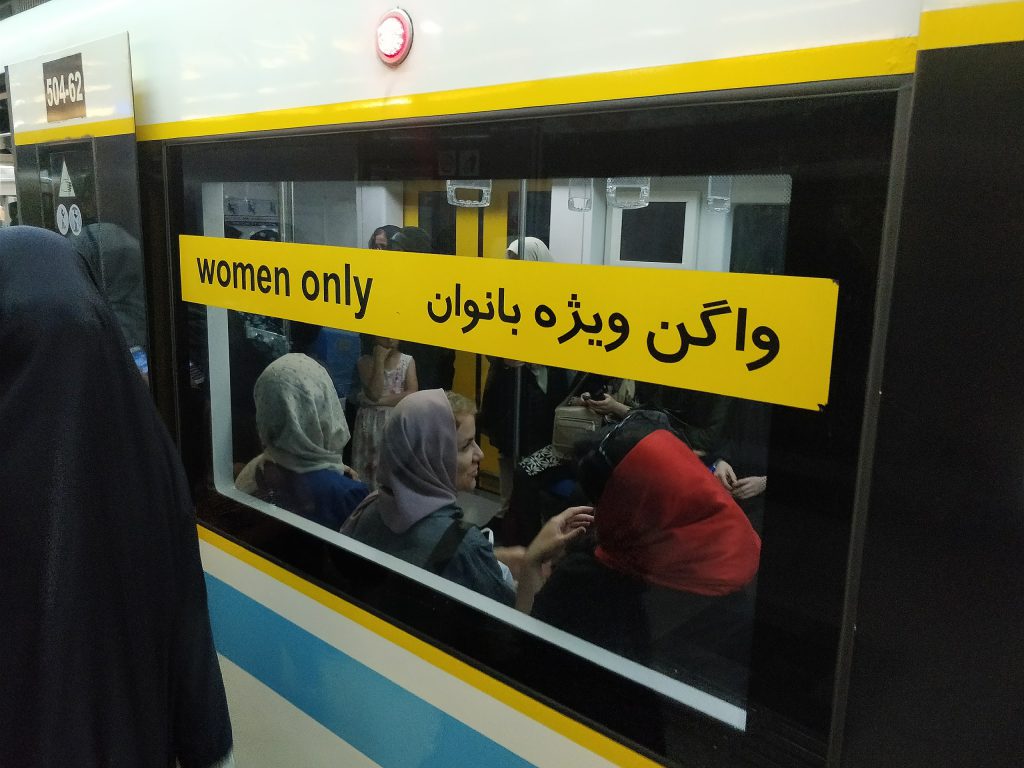
It’s important to note that there are some separate men’s and women’s carriages on public transport in Iran, both on the metro and buses for those women who prefer to use them. While subway cars are generally mixed-gender, women who want more privacy can choose to ride in the first and last wagon on both sides. On buses, there may be designated seating areas for men and women, with women sitting in the back and men in the front, or vice versa. However, couples can sit together in the men’s section but not in the women’s section. Respecting these gender-segregated arrangements while using public transport in Iran is essential.
Pre-register with the Foreign Office of Your Country
Before embarking on your journey to Iran, it’s important to research the specific travel regulations, rules, and warnings for your home country. Each country has its own guidelines, and it’s critical to be aware of them before setting off on your adventure.
To ensure your safety and peace of mind, it’s also a good idea to pre-register or alert your foreign office about your travel plans. This step is particularly important for British citizens, as there is no embassy representation in Iran. By registering with your foreign office, you can stay informed about any updates or changes in travel regulations or warnings.
It is important to note that certain travel insurance providers may ask you to inform the appropriate authorities about your travel plans before you can obtain coverage. To ensure that you are fully protected, it is essential to identify which authorities you need to inform before you leave.
By taking these steps before your trip, you can travel to Iran with confidence, knowing that you have done your due diligence to ensure your safety and security.
Internet Access during Iran Travel

When traveling to Iran, it’s important to anticipate limited internet access and mandatory “digital filtering.” The Internet connection in Iran is known for being frustratingly slow, and many popular social media platforms such as Instagram, YouTube, and WhatsApp are blocked. Additionally, you need to pay fees for a good connection.
Make sure that you inform your family members or friends that you may be out of touch and to prepare for unreliable internet.
Recommended SIM Cards to Use in Iran
When it comes to buying a SIM card in Iran, Irancell is the top phone operator and offers temporary SIM cards specifically designed for tourists. These SIM cards come pre-loaded with a credit balance and 4G internet access, allowing you to stay connected with ease. They are sold at Tehran Imam Khomeini International Airport and are valid for 30 days.
Irancell’s temporary tourist SIM cards provide affordable and convenient connectivity throughout Iran.
You can buy regular Irancell SIM cards from their service centers located in almost every city. However, it’s important to note that you need to purchase charge and internet packages before using them. To do so, you can get assistance from Irancell staff at the centers, use the MTN Irancell application, or dial USSD codes.
Which VPN to use in Iran?
Staying connected while traveling in Iran can present unique challenges, particularly when it comes to accessing the internet and using your preferred VPN. To ensure that you can stay connected and protect your online privacy, it’s essential to find the right VPN for your needs.
There are several VPN options available for both Android and IOS users. For Android users, Hi VPN, Psiphon, v2ray, and Hotspot Shield are recommended, each offering reliable and secure connections. For IOS users, popular VPN options include Psiphon, Free VPN, and VPNProxyMaster, all of which are well-suited to use in Iran.
To have a suitable and safe VPN, you can ask your tour operator or tour guide for help. If you have any questions or help do not hesitate to ask To Iran Tour support team.
Persian Food
Iran is well-known for its varied and flavorful cuisine. If you’re a foodie who loves trying new things, you should definitely give Persian cuisine a try! Some must-try dishes include stews, Dizi (a lamb-based dish with broth and solids separated), Ash, and Haleem. To ensure you have the best experience, it’s important to do some research and find the top restaurants that serve these dishes so you can truly savor the flavors of Iran.
Iranian food for vegetarians
In Iranian cuisine, meat is a staple ingredient, but there are also numerous vegetarian dishes that are just as delectable. Mirza-Ghasemi or Kashk-e Badenjan, both made with eggplant, are excellent choices. If you’re on a tight budget, go for Falafel, which is both inexpensive and delicious. However, it’s crucial to convey your dietary requirements to the restaurant staff and be ready to request that meat be omitted from your meal if needed.
By being open to trying new dishes, you can experience the rich and diverse cuisine of Iran with a little extra effort and creativity.
Drinking in Iran
When it comes to drinking in Iran, it’s important to note that alcohol is strictly prohibited, and there are no bars or clubs serving alcoholic beverages. Instead, you’ll find a variety of non-alcoholic beer options available, typically in fruity flavors such as peach, lemon, strawberry, etc.
It’s important to understand that there are no exceptions when it comes to alcohol consumption in Iran, whether you’re a local or a traveler. While it’s tempting to take up offers from locals to find the “real deal” at underground gatherings, it’s not worth the risk. The punishment for alcohol possession or consumption can be severe, and there are no allowances made for tourists or visitors.
Did you know that Buttermilk, or “Doogh” as it’s called in Iran, is a delicious fermented dairy drink? It has a slightly sour taste and is often paired with dried herbs like mint for a refreshing flavor. It is very common to enjoy Doogh besides any kind of kebab.
Iranian Etiquette
When visiting Iran, it’s important to be aware of and respectful of the cultural and religious customs that may differ from your own. By following these customs, you can demonstrate your appreciation for Iranian culture and enjoy your trip to the fullest. Here are some etiquette guidelines and fascinating insights into Iranian culture to keep in mind:
- One of the primary forms of social etiquette is “Taarof”, where Iranians may insist on offering things to people, even if they don’t mean it. As a visitor, it is important to be aware of local customs and not immediately accept an offer.
- During the Muharram month, which is the mourning month of Imam Hossein, to show respect for religious beliefs, it’s best to avoid wearing bright colors, especially red.
- During Ramadan, eating or drinking in public is disrespectful while most people are fasting during the day.
- Shaking hands between men and women can be a delicate matter, and it is generally unacceptable for unrelated men and women to engage in this gesture. As a female tourist, it is advisable to wait and observe if men initiate the handshake first, instead of initiating it yourself.
- The thumbs-up hand signal is OKAY in Iran, but it is better not to use it in the presence of older people. However, younger people understand its meaning.
- In Iran, there are certain limitations when it comes to public displays of affection. While affectionate gestures like touching, kissing and handshakes between family members are acceptable, French kissing is considered inappropriate. Holding hands is generally tolerated, but hugging might be regarded as crossing the line. It’s important to note that inside holy places and religious cities, any public display of affection may not be tolerated at all.
For a truly enriching travel experience, it’s important to embrace and appreciate the customs and culture of Iran. By respecting their traditions, you’ll gain a deeper understanding and connection to the country and its people.
Time in Iran and the Solar Calendar
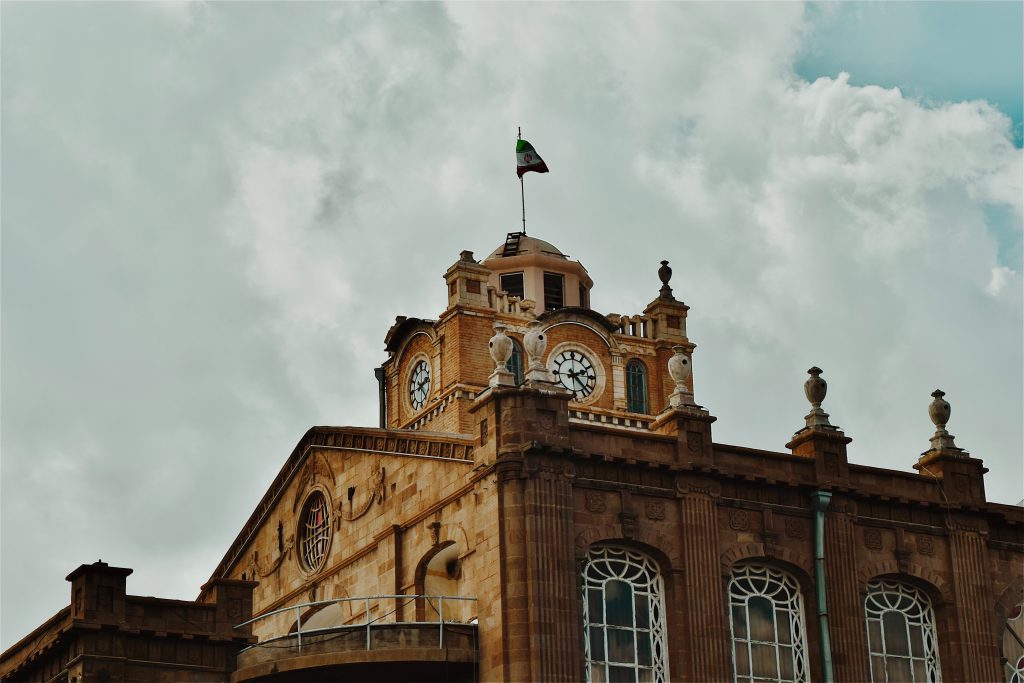
The country operates on Iran Standard Time (IRST), which is UTC+3:30.
The Solar Hijri Calendar
The solar calendar used in Iran is known as the Iranian calendar or the Persian calendar. It is a type of solar calendar that is based on the astronomical observations of the Sun’s movement. The calendar has its roots in ancient Persia and has undergone several modifications throughout history to align it with various astronomical and cultural considerations.
Here are some key differences between the Iranian calendar and the commonly used Gregorian calendar:
- Starting point: The Iranian calendar starts from the year of the Prophet Muhammad’s migration from Mecca to Medina, known as the Hijra. This event occurred in 622 CE in the Gregorian calendar. Therefore, the Iranian year is approximately 621 years behind the Gregorian year.
- Length of the year: The Iranian calendar is a solar calendar that consists of 12 months, each with varying lengths. The total length of a year in the Iranian calendar is approximately 365 or 366 days, depending on whether it is a leap year or not. Leap years occur every four years and consist of an additional day, just like in the Gregorian calendar.
- Naming of the months: The Iranian calendar has its own set of month names, which are deeply rooted in Persian culture and history. The names of the months are as follows: Farvardin, Ordibehesht, Khordad, Tir, Mordad, Shahrivar, Mehr, Aban, Azar, Dey, Bahman, and Esfand.
- Different New Year: The Iranian New Year, known as Nowruz, is celebrated on the vernal equinox, which usually falls on March 20th or 21st in the Gregorian calendar. Nowruz marks the beginning of spring and is one of the most significant holidays in Iran and several other countries in the region.
- Different era: The Iranian calendar uses the Islamic lunar Hijri era, which began with the Hijra mentioned earlier. In contrast, the Gregorian calendar uses the widely accepted Common Era (CE) system.
Time is a curious thing. It flows differently for each culture and place, shaped by history, geography, and tradition.
While visiting Iran, it’s best to keep an open mind when it comes to timeframes. It’s a good idea to bring along some extra patience and be ready to go with the flow. This is especially true when it comes to food, service, and payment. By embracing the relaxed pace of life in Iran, you can fully immerse yourself in the local culture and enjoy a more laid-back travel experience.
Read more on Iran’s History and Iran Travel
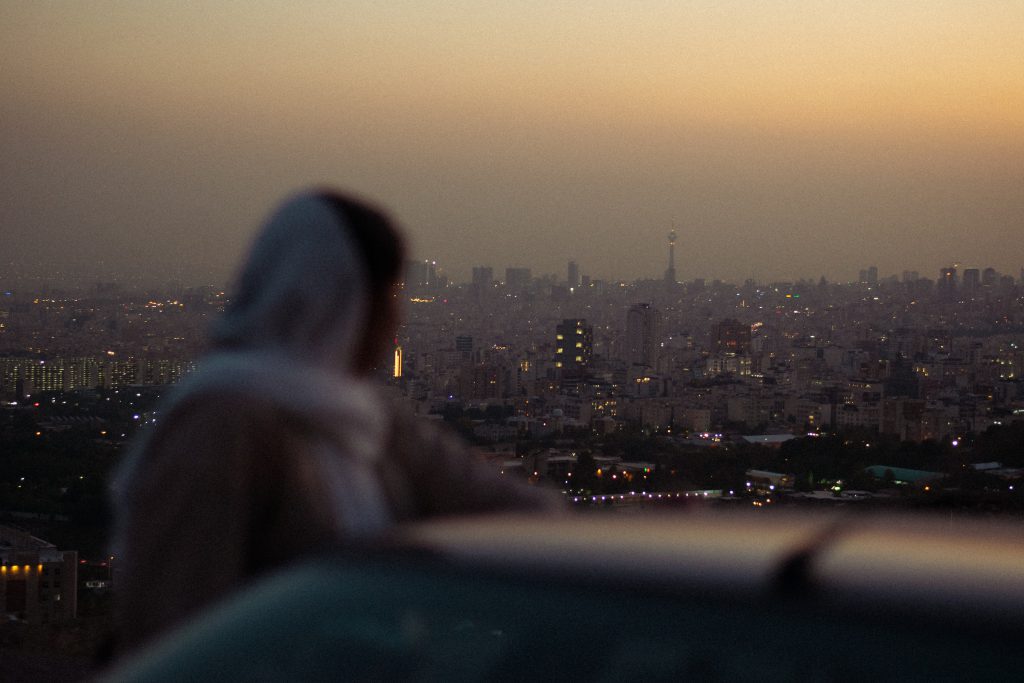
Iran boasts a complex and fascinating history, which can be difficult to comprehend without prior knowledge. Even though tour guides can be informative, it’s recommended to do some research on the history of Persia and the events leading up to the Iranian Revolution in 1979 before embarking on a trip to Iran. This will enable you to gain a better understanding of the country’s composition and value its abundant cultural heritage.
Book Recommendation
Here are some excellent books to read before your trip:
- “Revolutionary Iran: A History of the Islamic Republic” by Michael Axworthy provides a comprehensive overview of recent Iranian history.
- “Iran: What Everyone Needs to Know” is also by Axworthy and delves into Iran’s economy, politics, culture, and people.
- “Daughter of Persia: A Woman’s Journey from Her Father’s Harem Through the Islamic Revolution” is a fascinating book. The story follows a woman born in Iran who went to study in the United States and later returned to the country amidst significant changes.
If you’re traveling in Iran, the Lonely Planet guidebook can be a valuable resource for exploring historical landmarks. While it’s not the only source of information, it’s a helpful tool to have with you since internet access in Iran may be limited.
To make the most of your trip to Iran, it’s a great idea to get to know its history and culture beforehand. Trust me, it will definitely enhance your travel experience!
FAQs about Visiting Iran
Q1: Do I need a visa to visit Iran?
A1: Yes, most travelers require a visa to enter Iran. You can obtain one through an Iranian embassy or consulate in your home country. There are some countries that can travel to Iran without a visa, and there are also some countries that can get their visa on arrival.
Q2: What is the best time to visit Iran?
A2: Spring (March to May) and autumn (September to November) are ideal times to visit, as the weather is mild, and many attractions are at their best. But Iran has varied weather across different regions. For instance, the ideal season to tour Iranian deserts is winter.
Q3: Is it safe to travel to Iran?
A3: Iran is generally safe for tourists, with low crime rates. However, it’s essential to stay informed about the current political situation and follow local guidelines.
Q4: What is the official currency in Iran?
A4: The official currency is the Iranian Rial (IRR), but you’ll commonly see prices quoted in Toman, which is equivalent to 10 Rials.
Q5: Can I use my credit card in Iran?
A5: No, international credit and debit cards are not widely accepted in Iran. Bring cash in US dollars or Euros and exchange it locally.
Q6: Is it safe for solo female travelers in Iran?
A6: Yes, Iran is considered safe for solo female travelers, but it’s important to dress modestly and be aware of local customs and norms.
Q7: Can I drink alcohol in Iran?
No, alcohol is strictly prohibited in Iran due to Islamic law. You won’t find it in public places.
Q8: What languages are spoken in Iran?
Persian (Farsi) is the official language, but many Iranians also speak English, especially in tourist areas.
Q9: Can I use social media in Iran?
Most social media platforms like Facebook and Twitter are blocked in Iran. However, you can access them using a VPN.
Q10: What is Iran famous for?
Iran is famous for its rich cultural heritage, historical sites, and stunning architecture. It’s renowned for attractions like the ancient city of Persepolis, the vibrant bazaars of Isfahan and Tabriz, and the beautiful mosques, such as the Pink Mosque in Shiraz. Iran is also known for its contributions to literature, poetry, and art, with famous poets like Rumi and Hafez hailing from this region. Additionally, Iran is celebrated for its world-class Persian rugs, saffron production, and traditional handicrafts.

